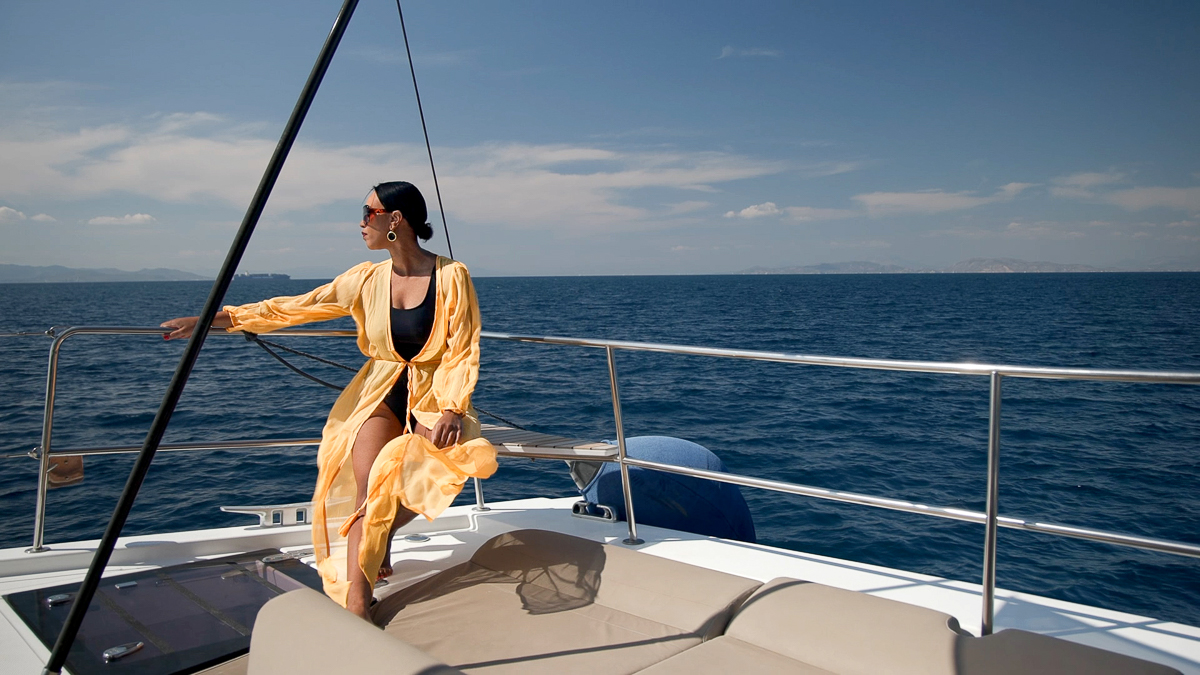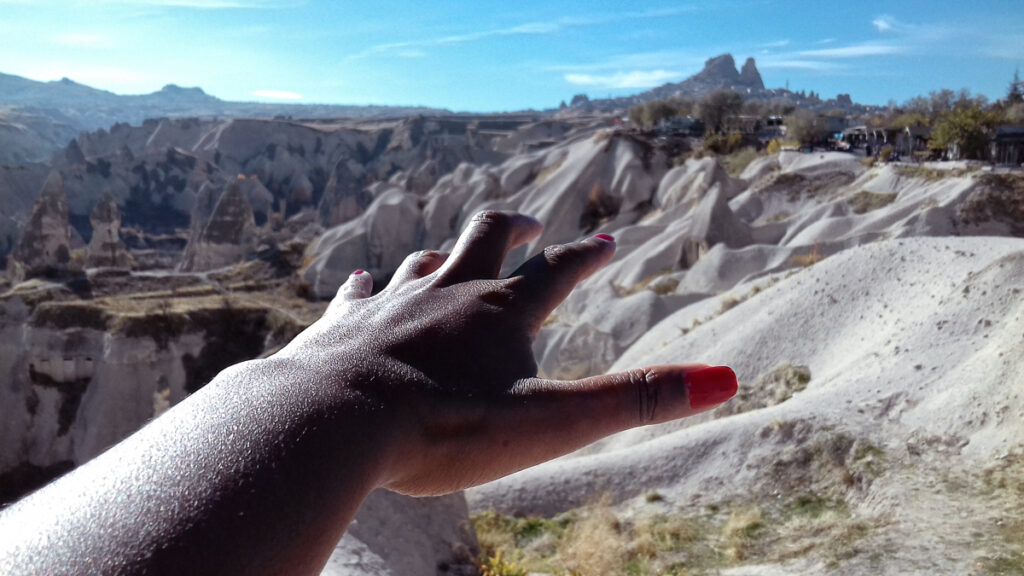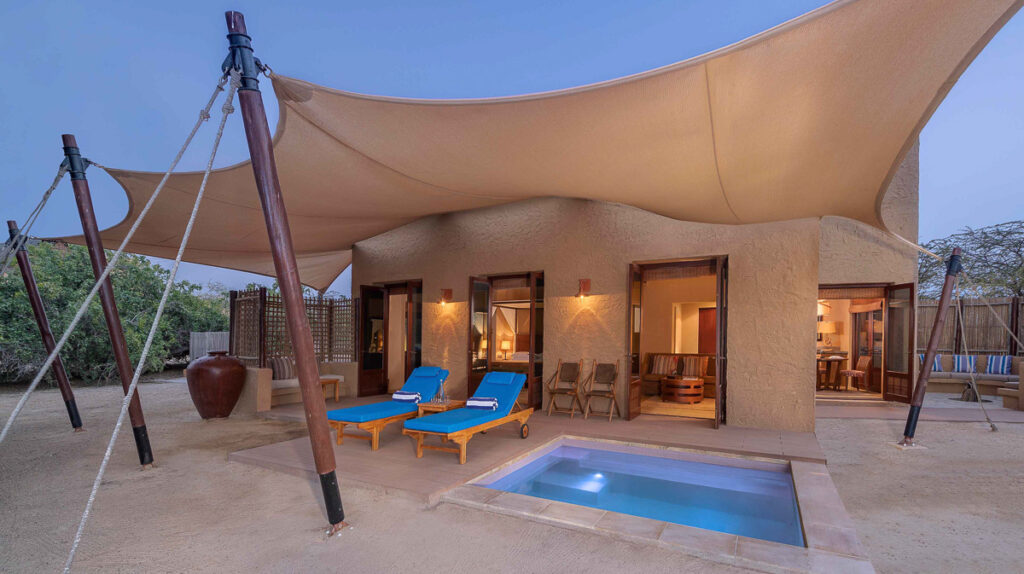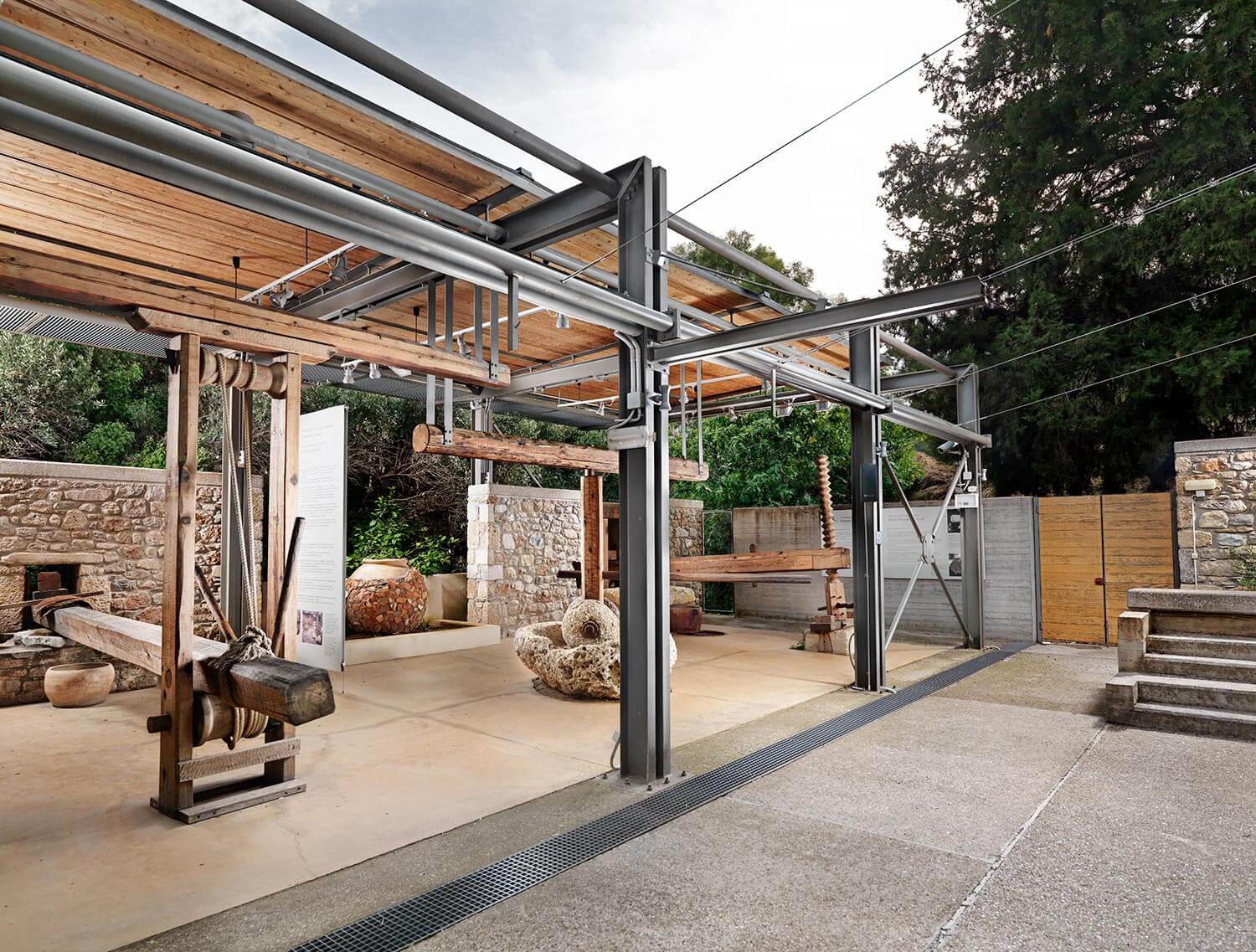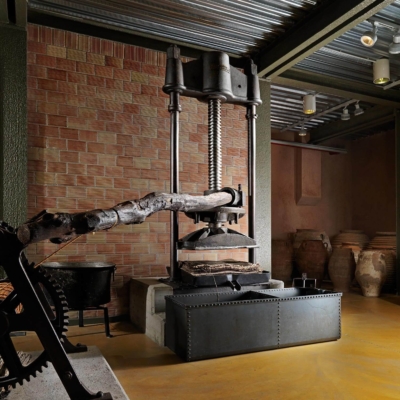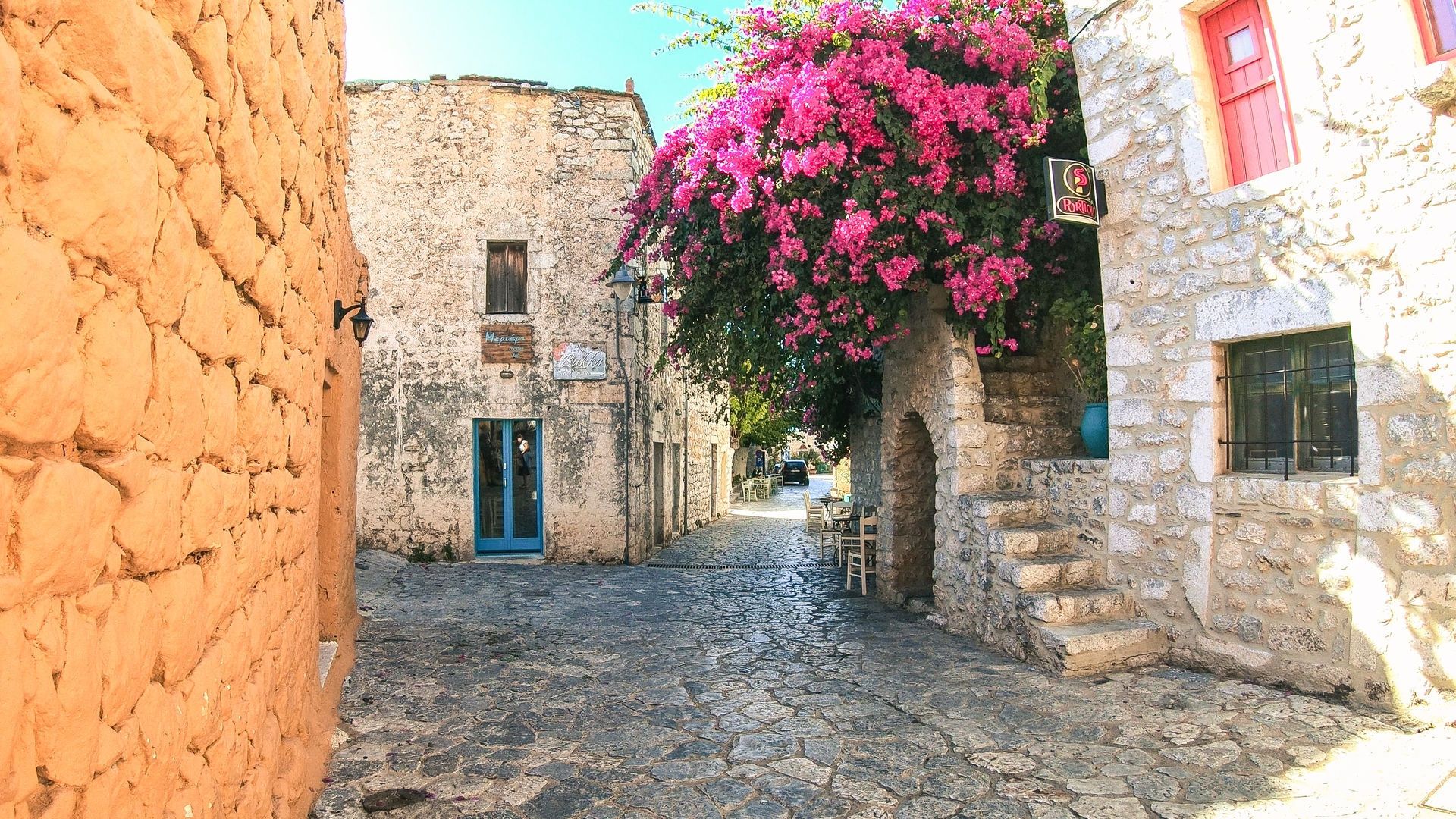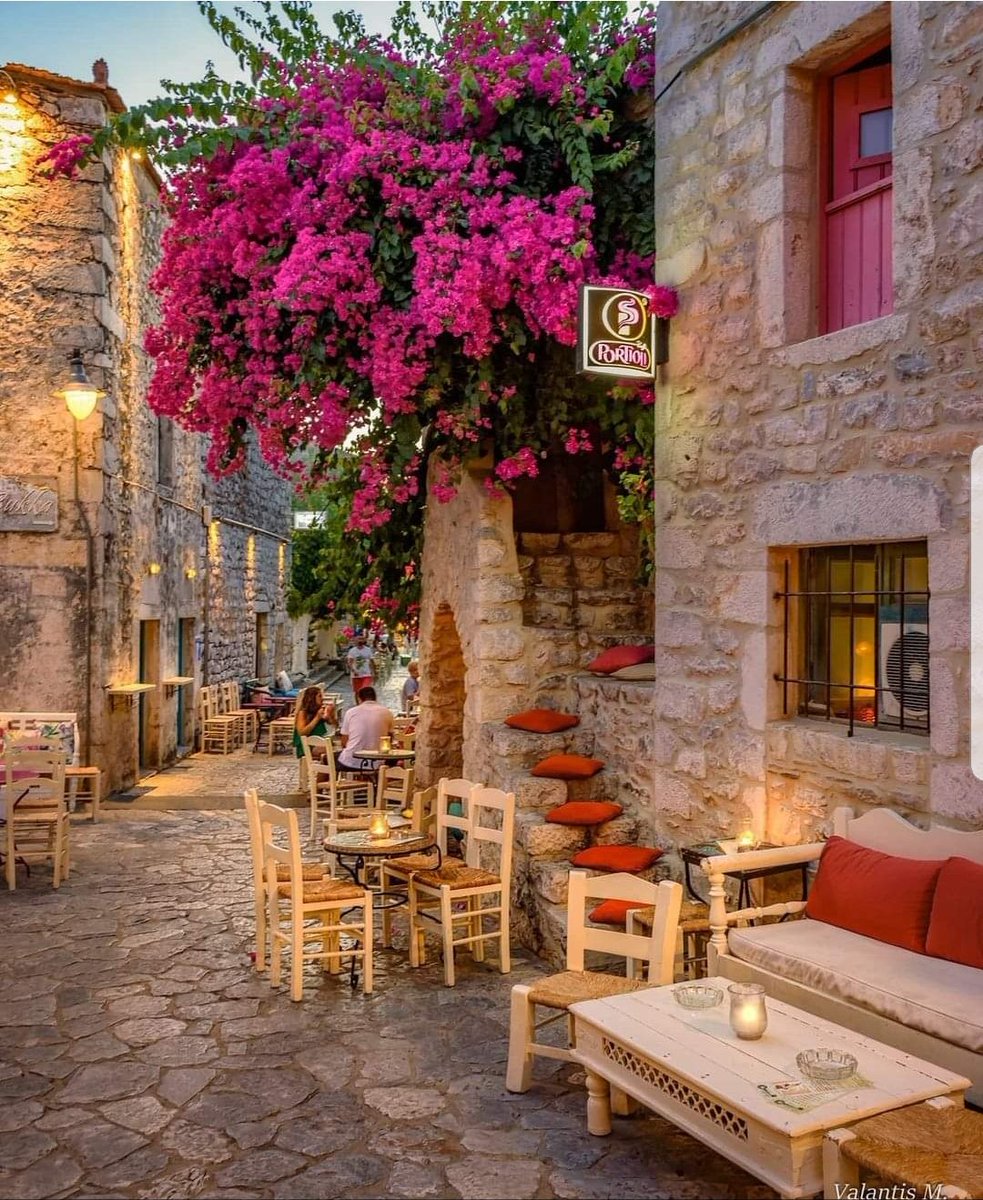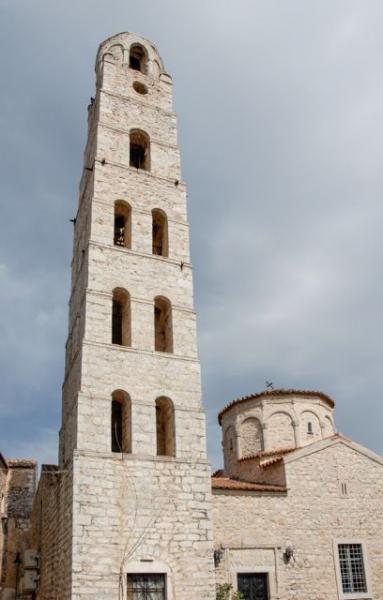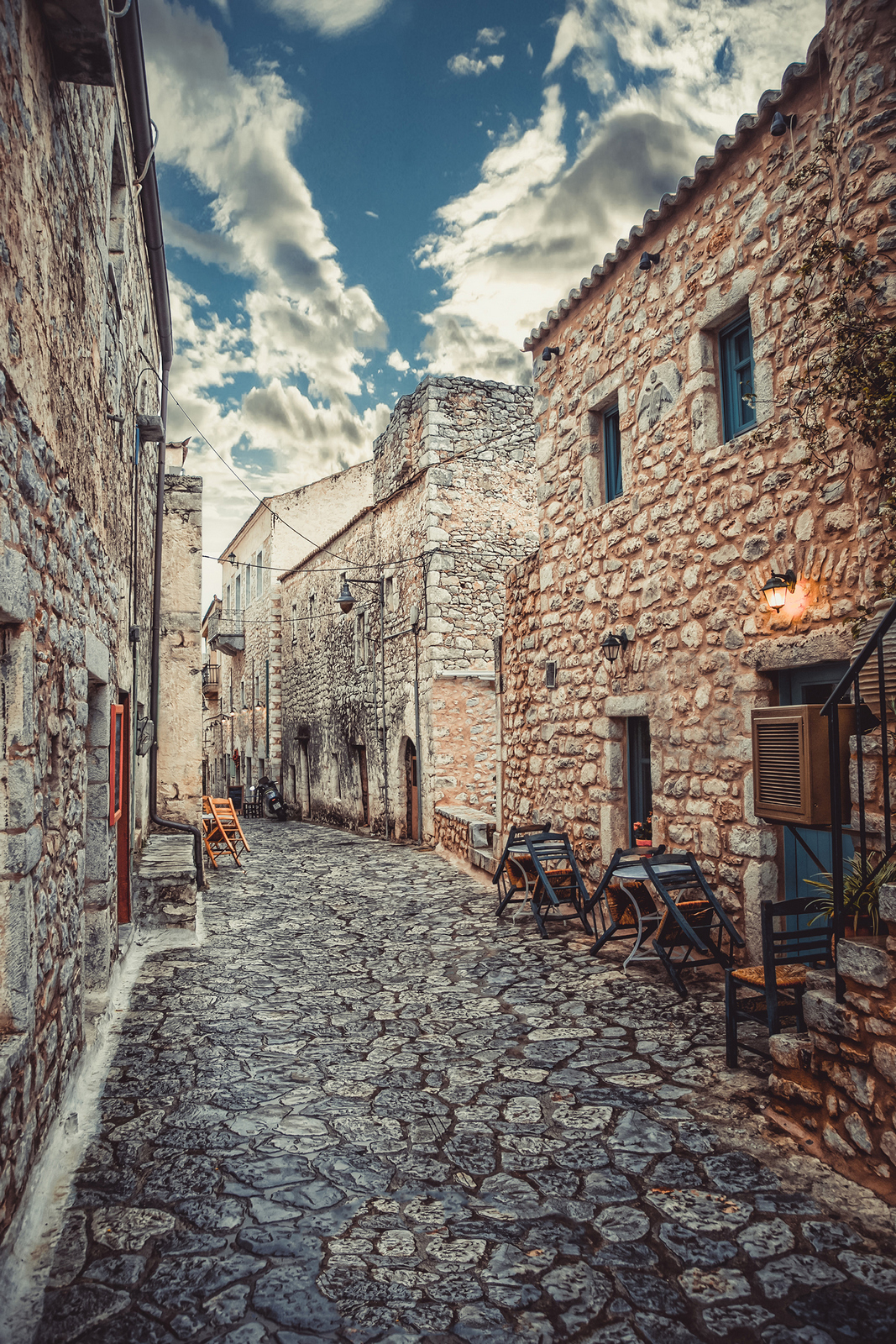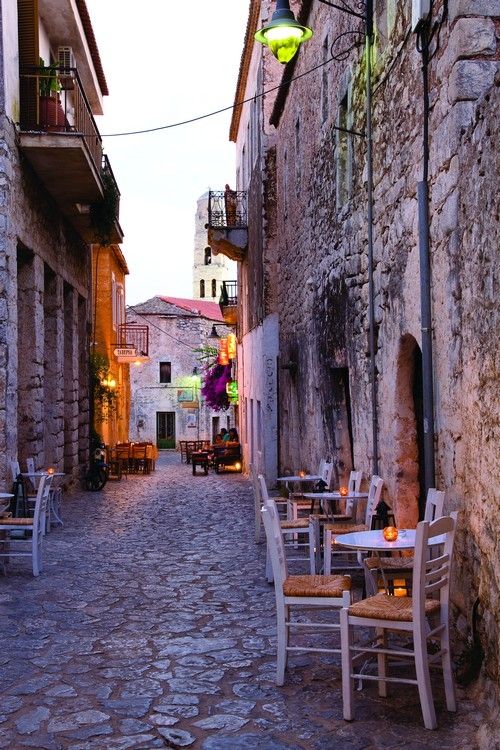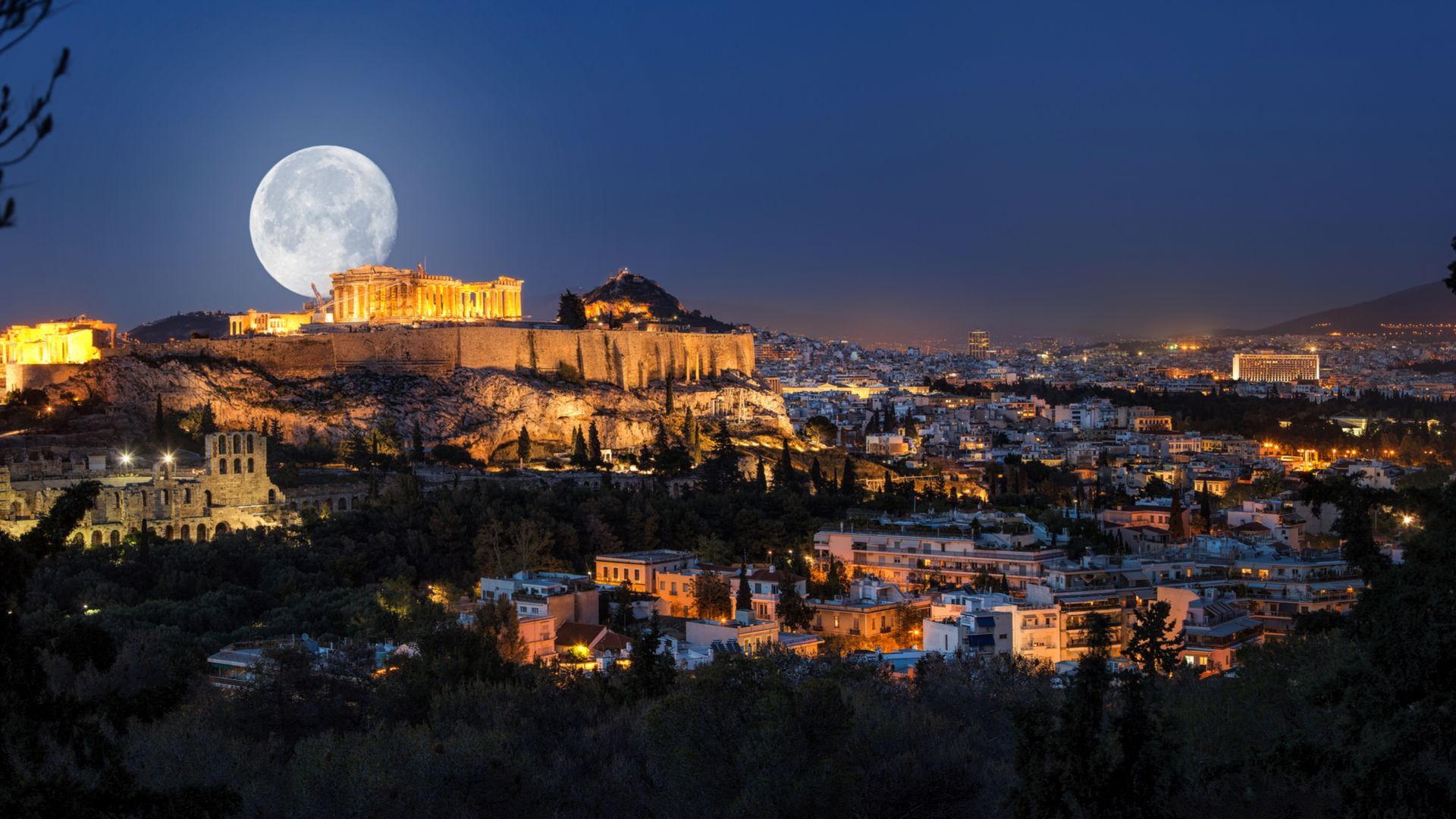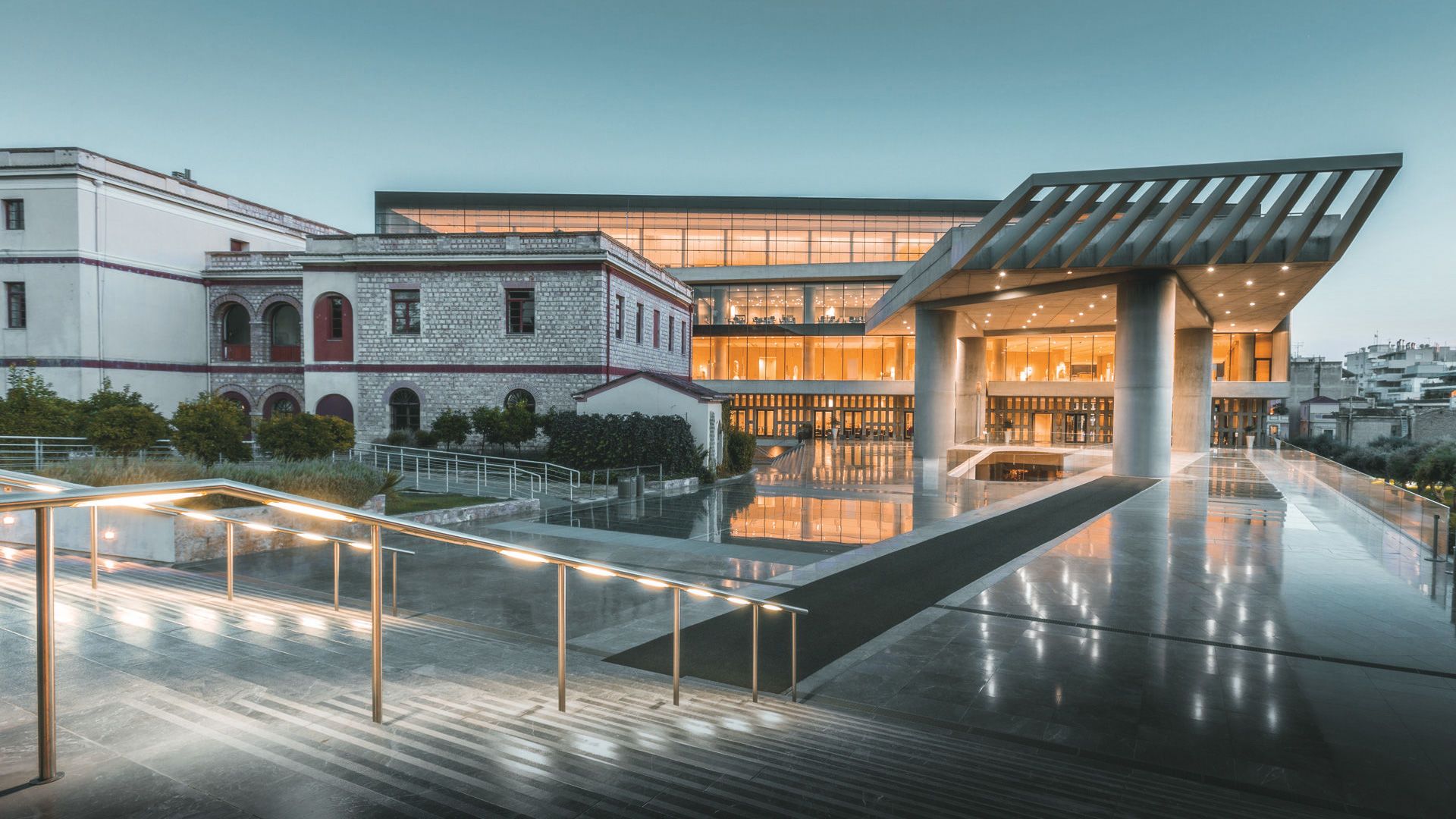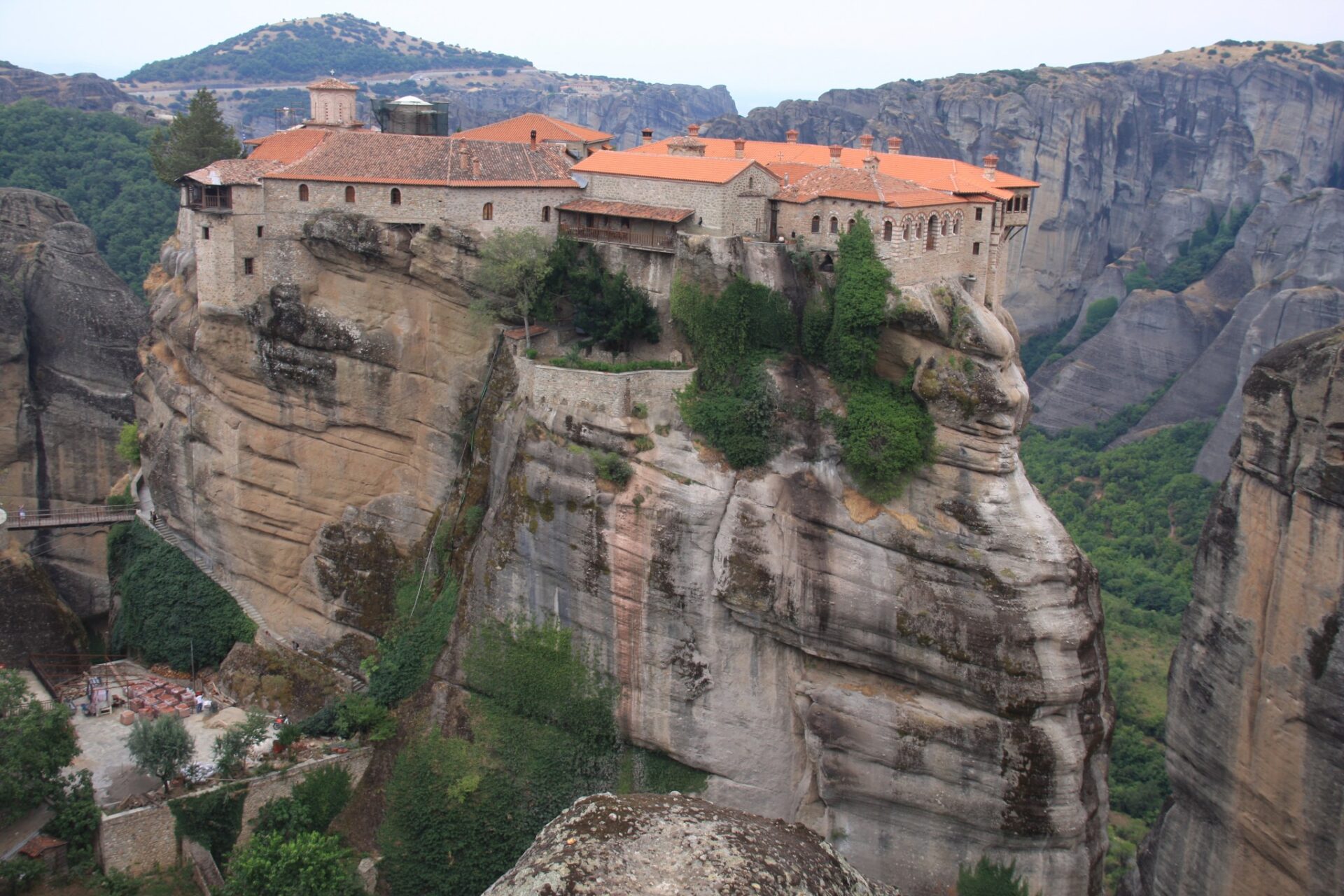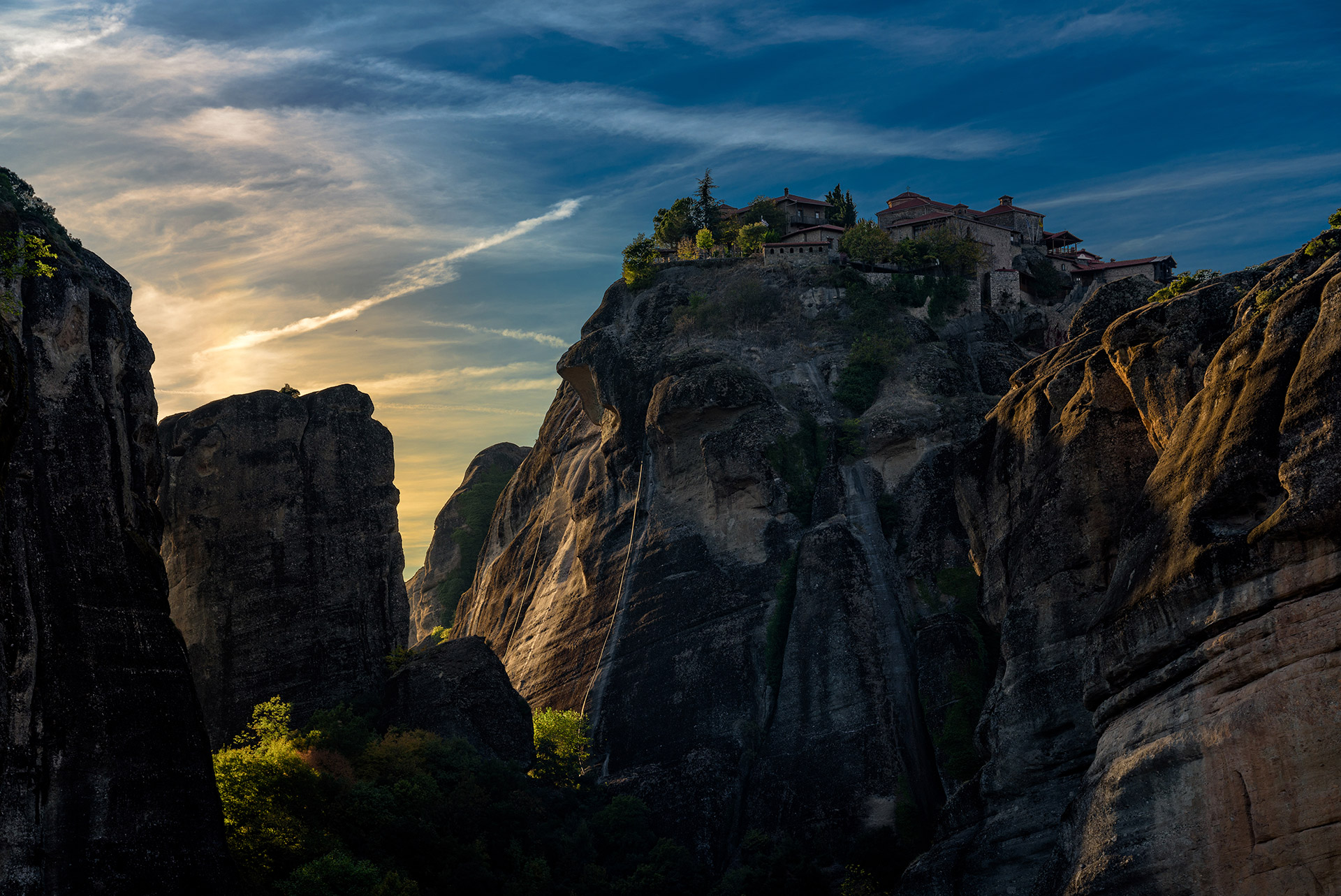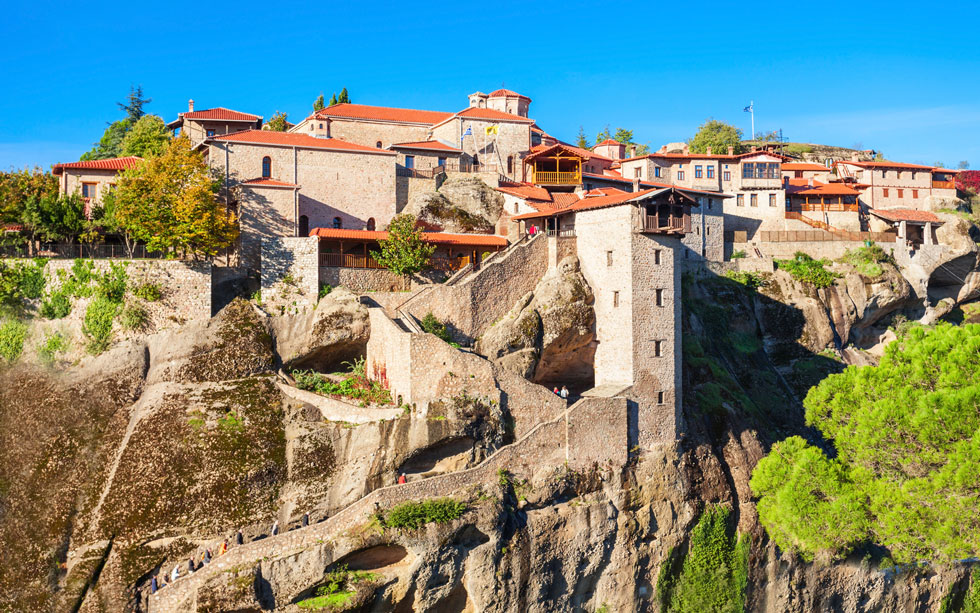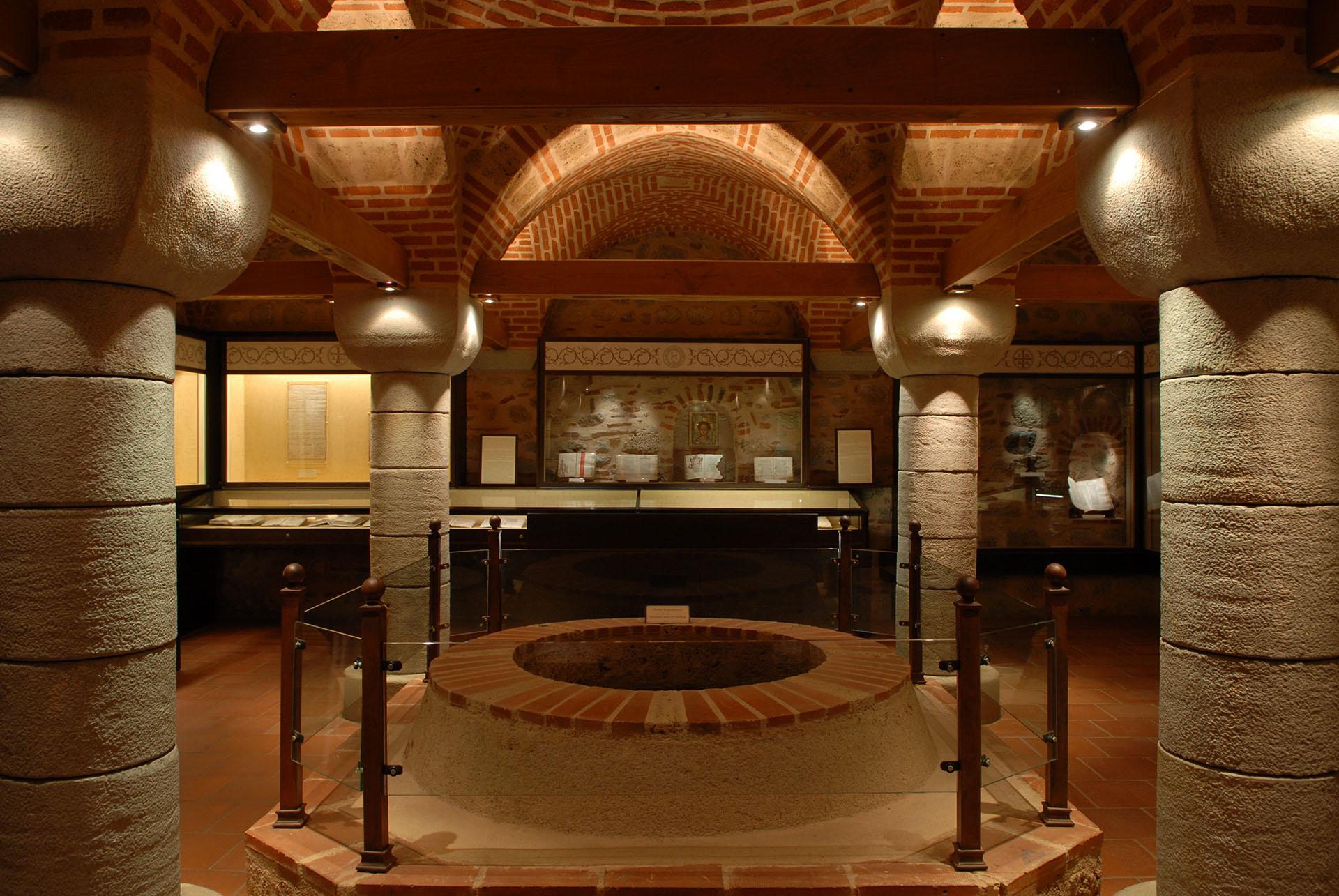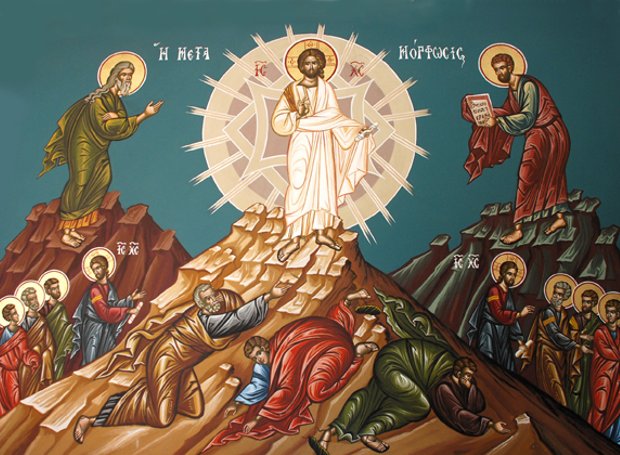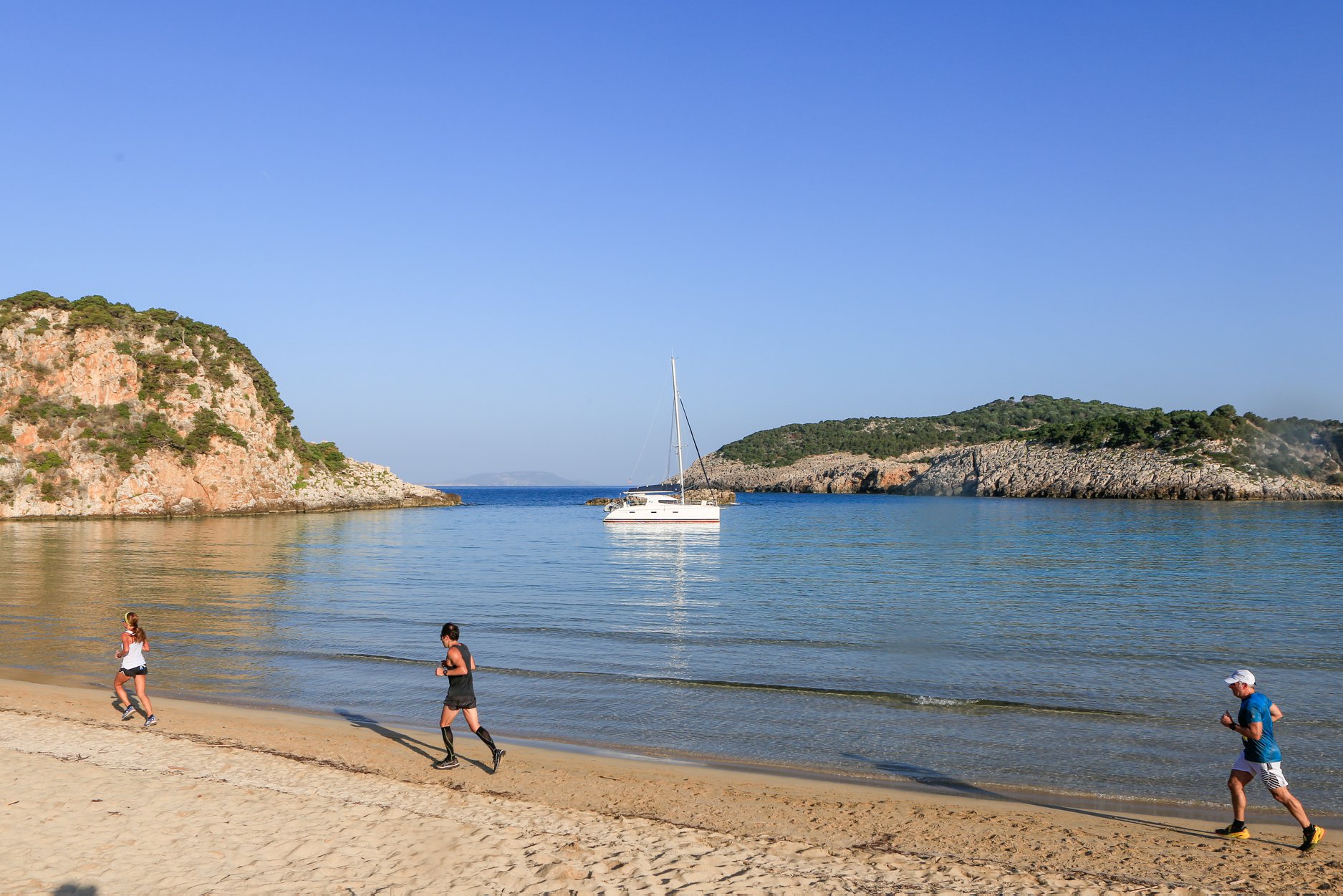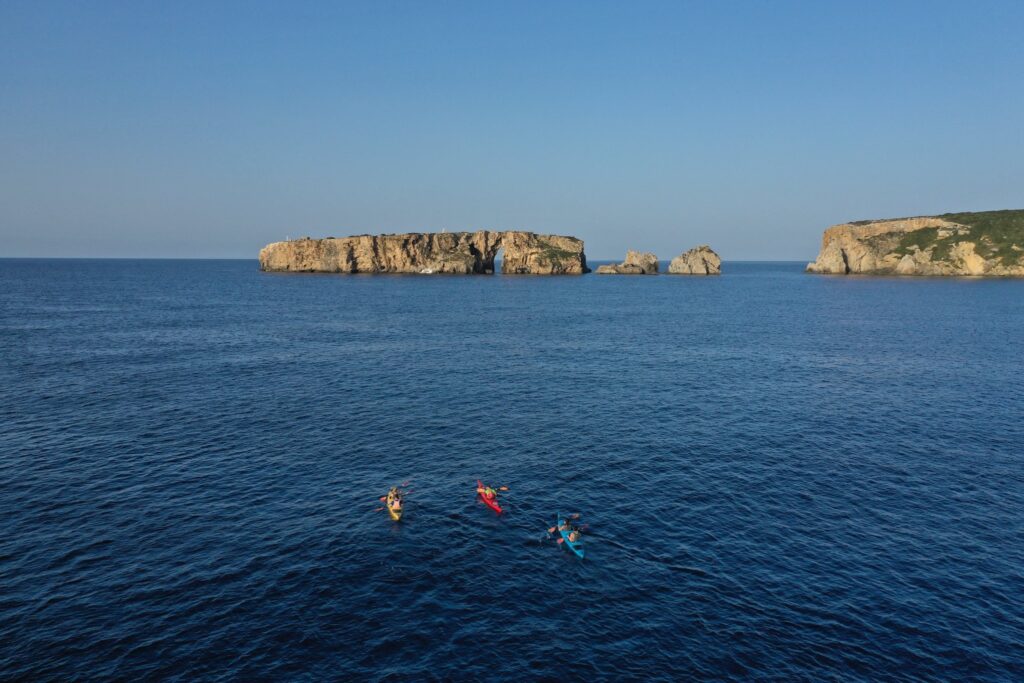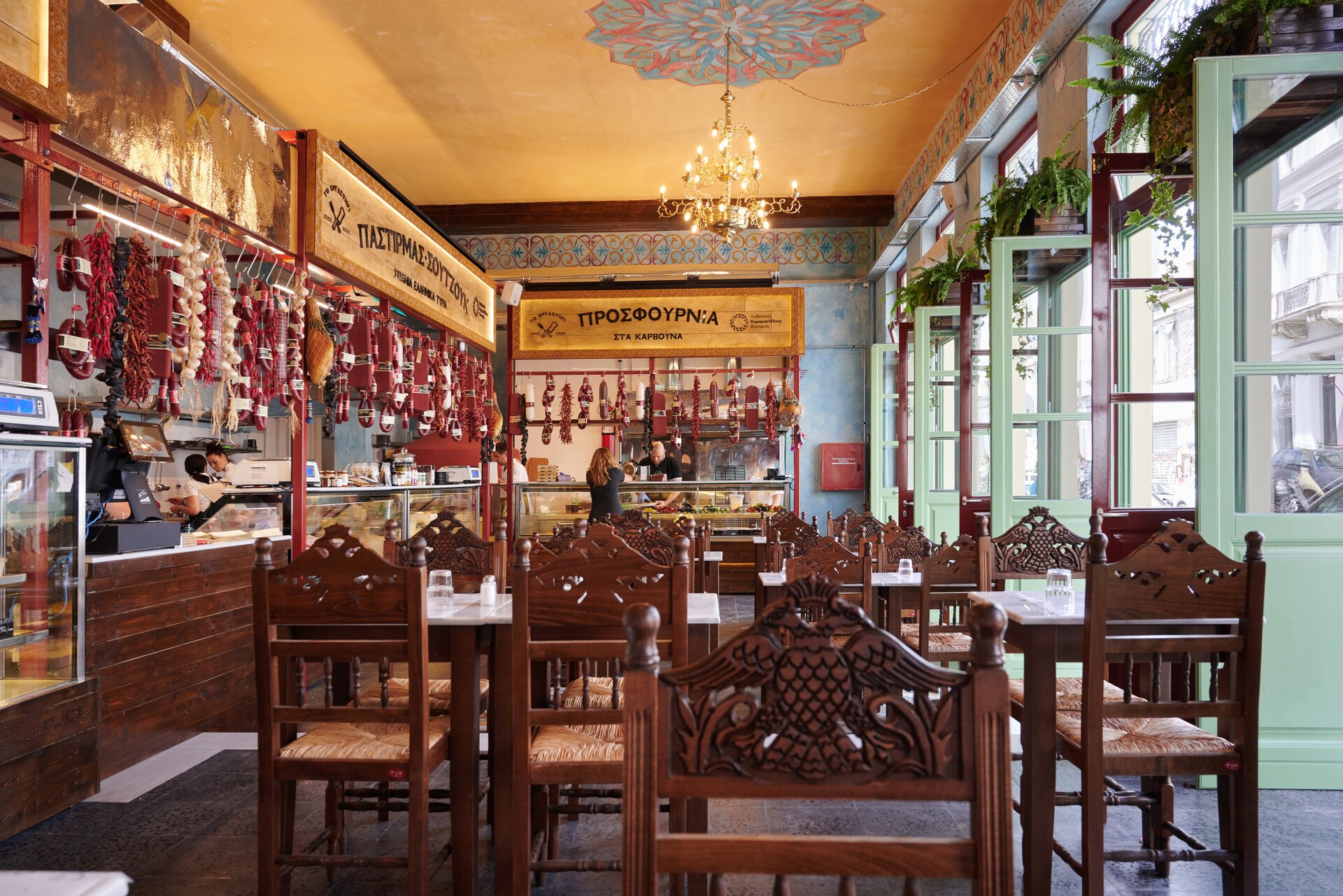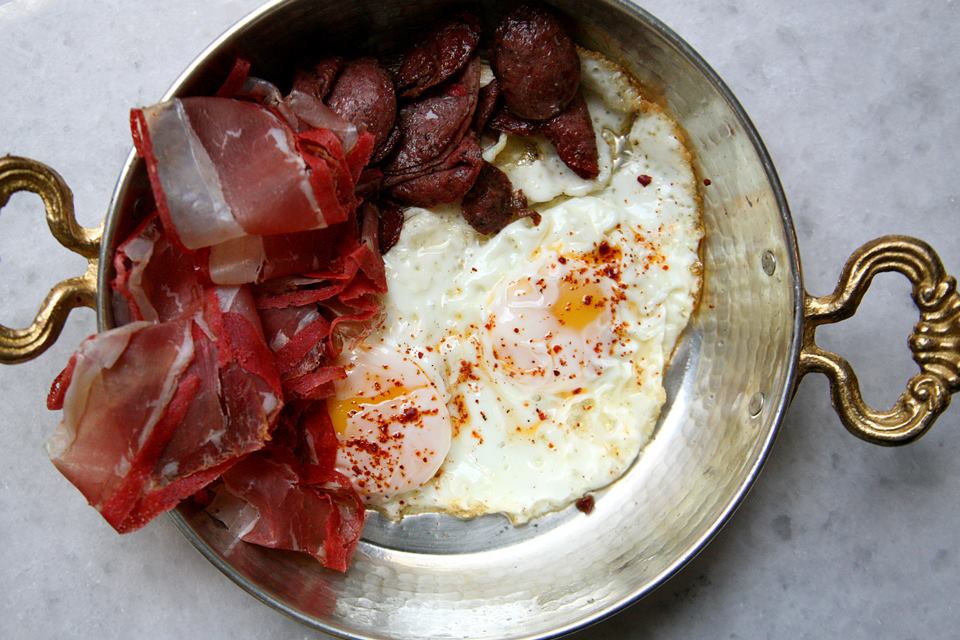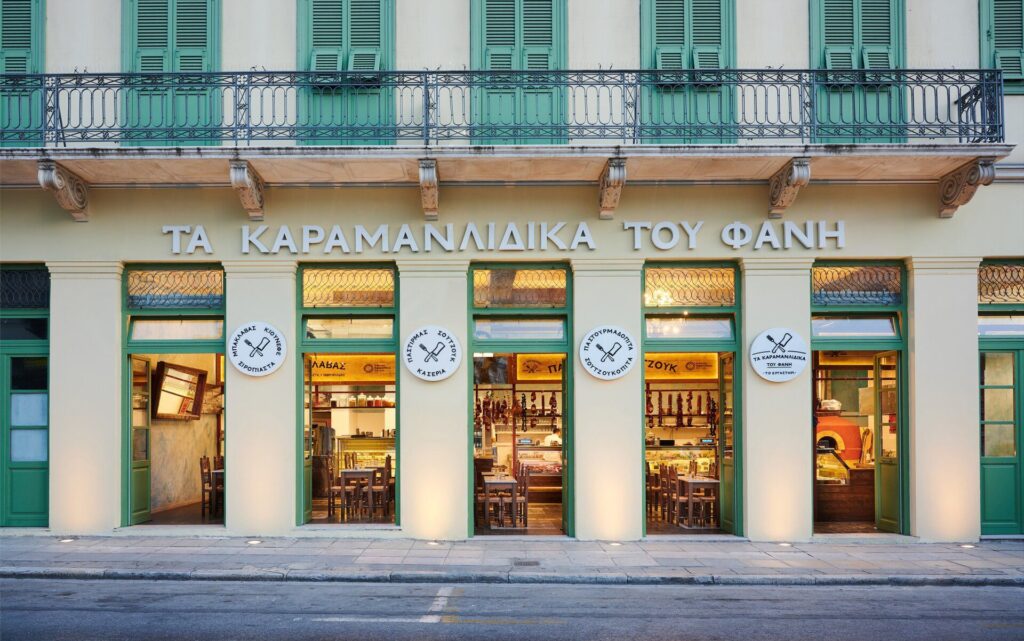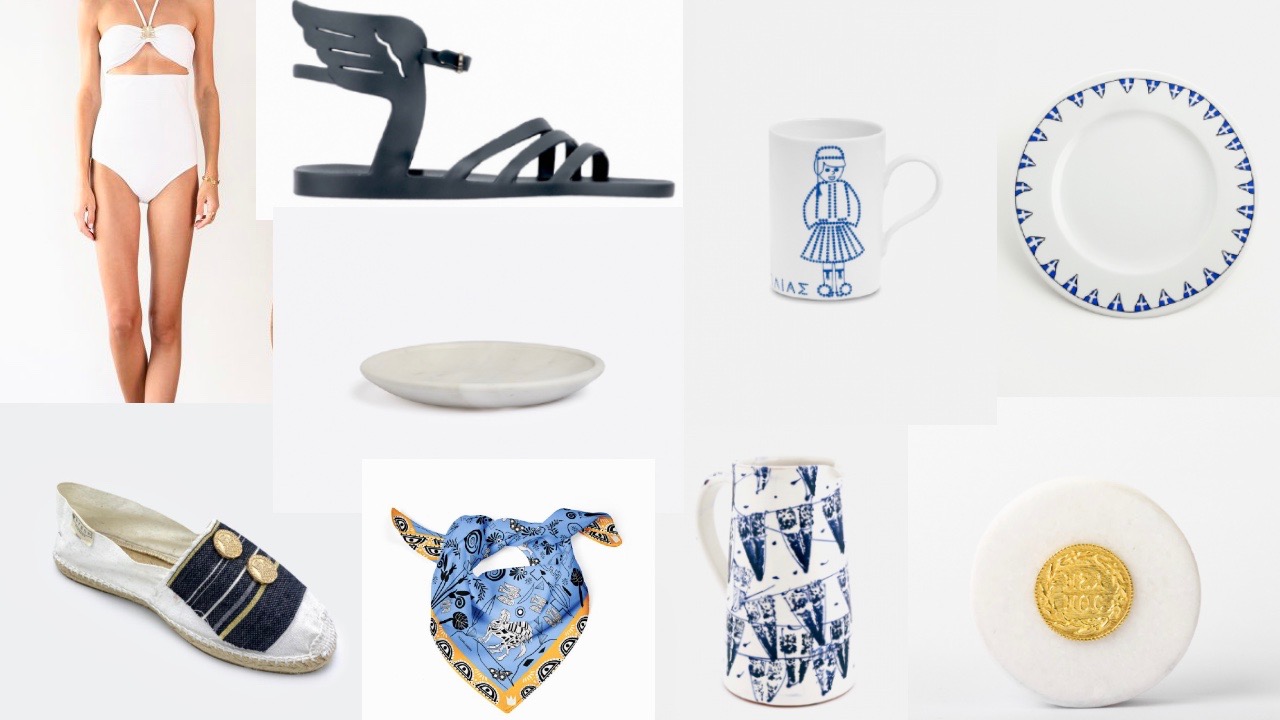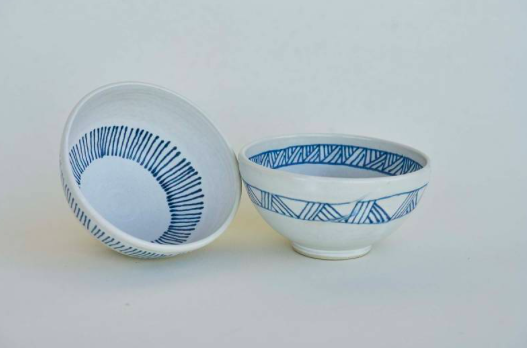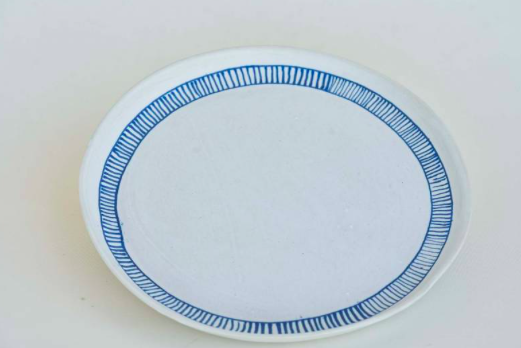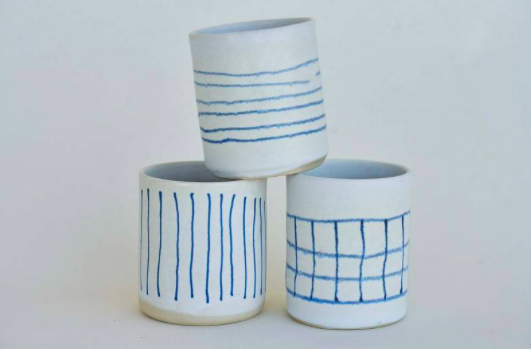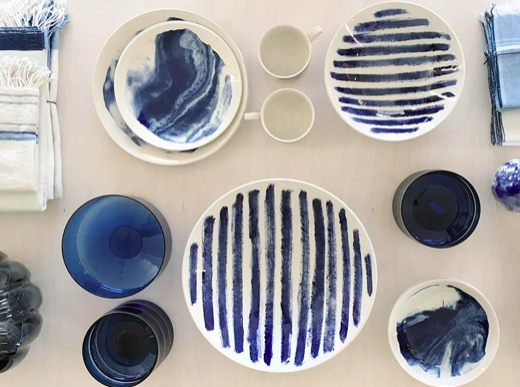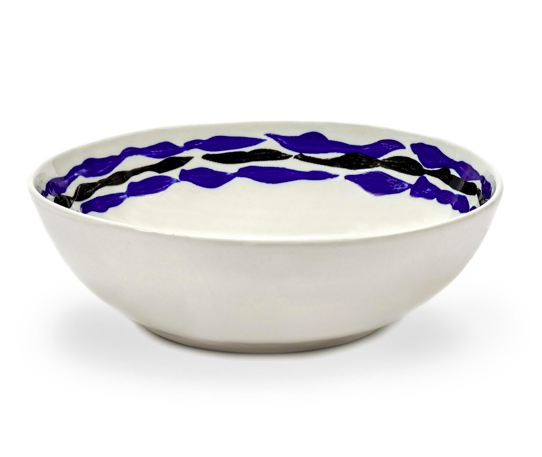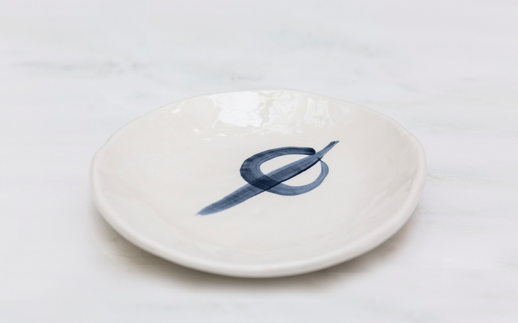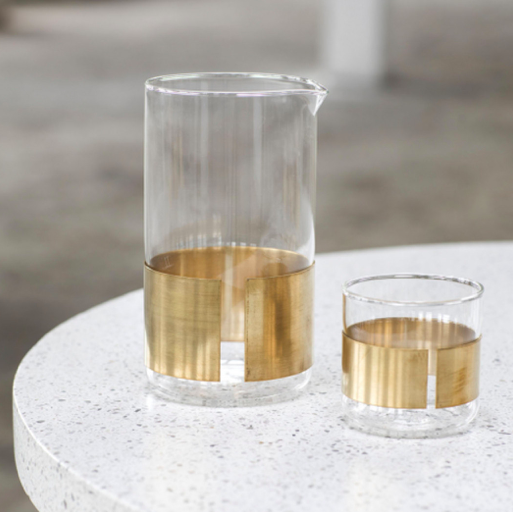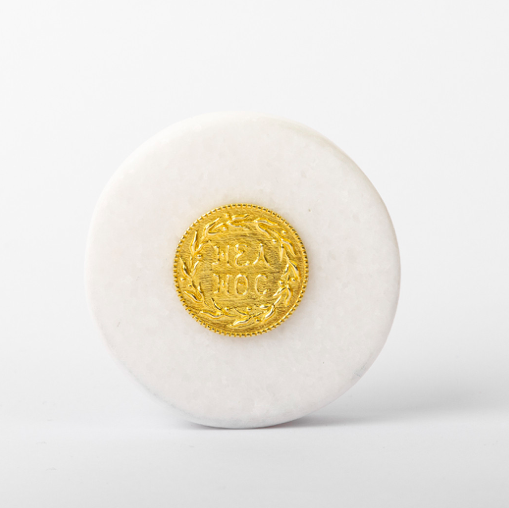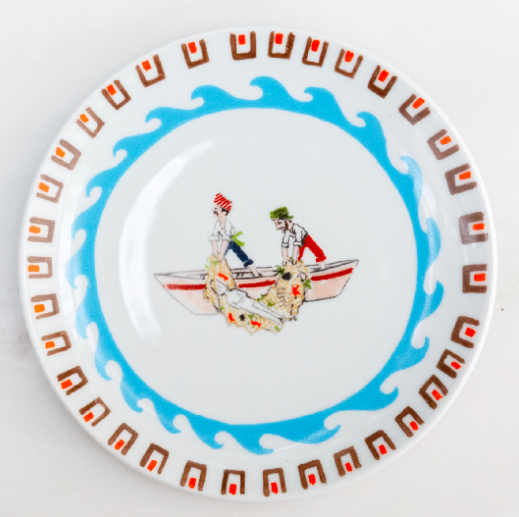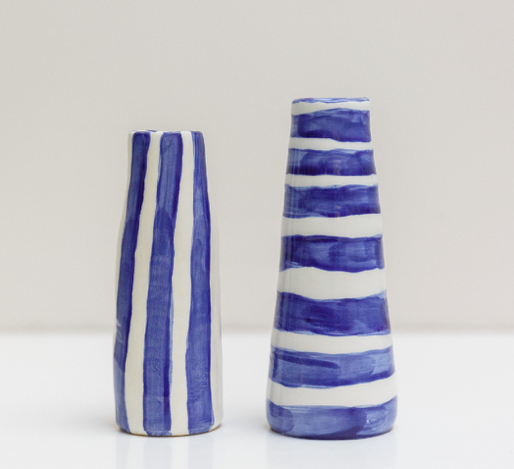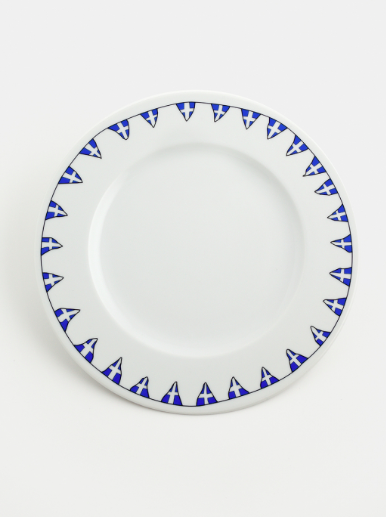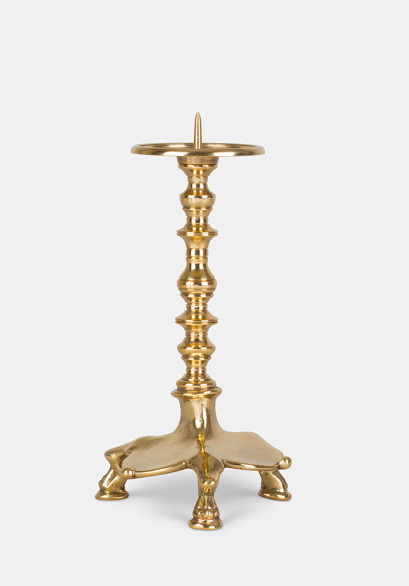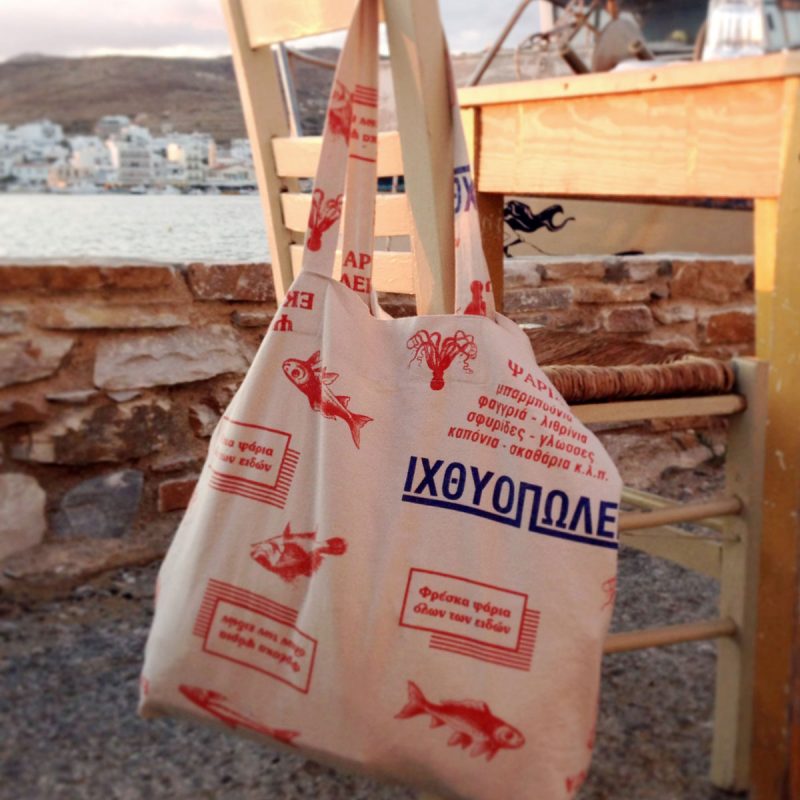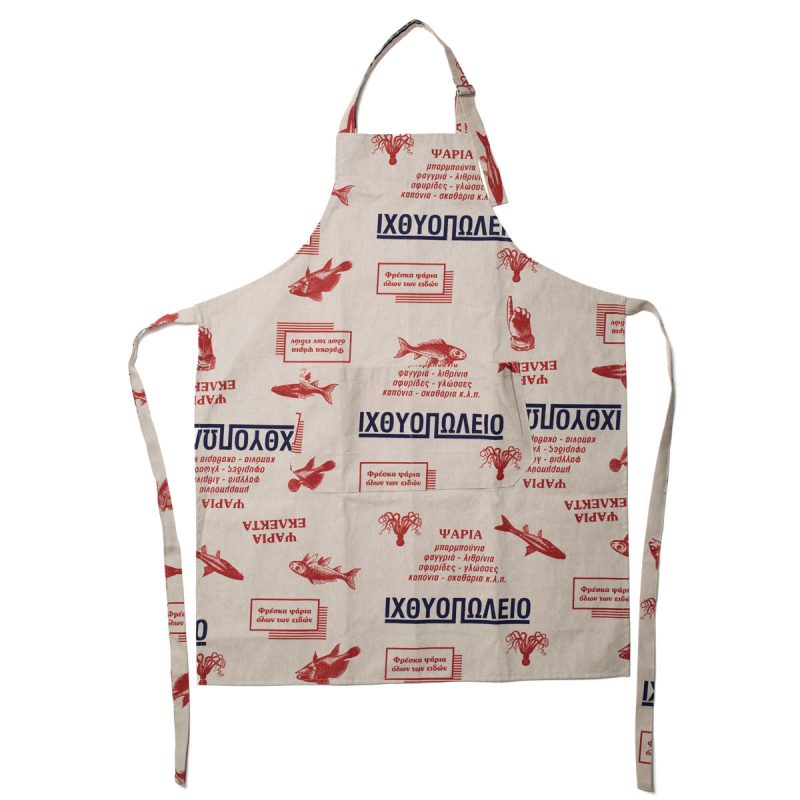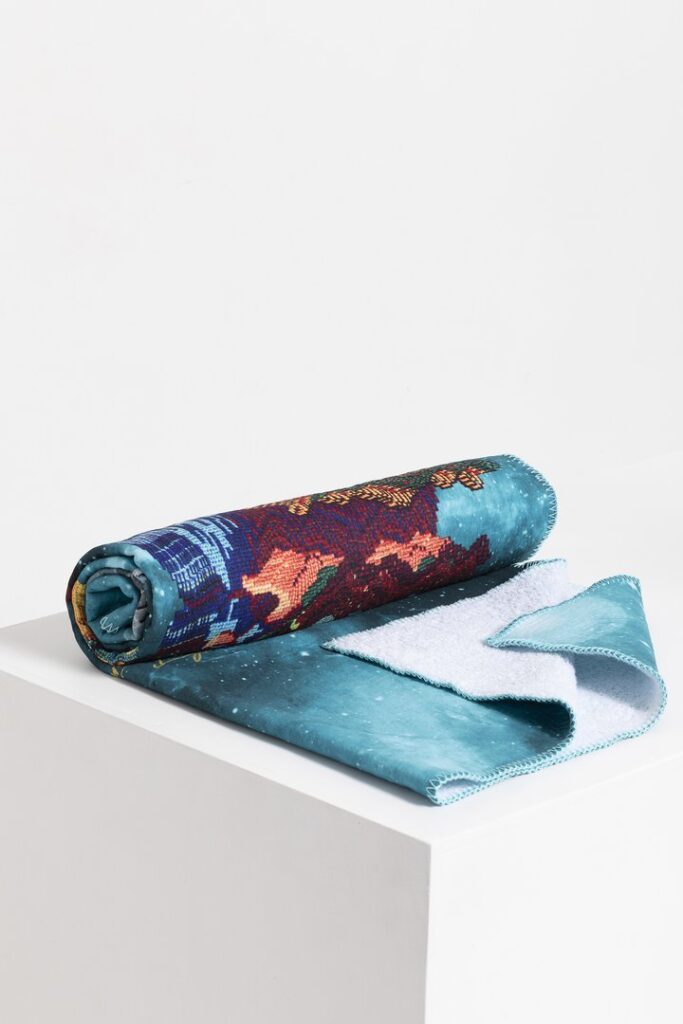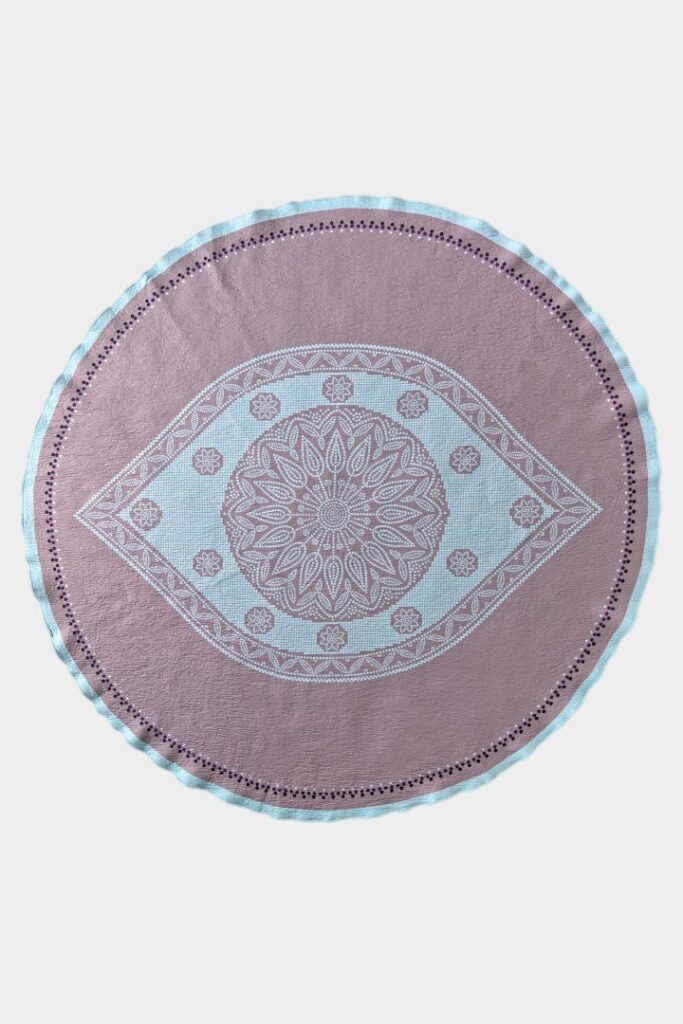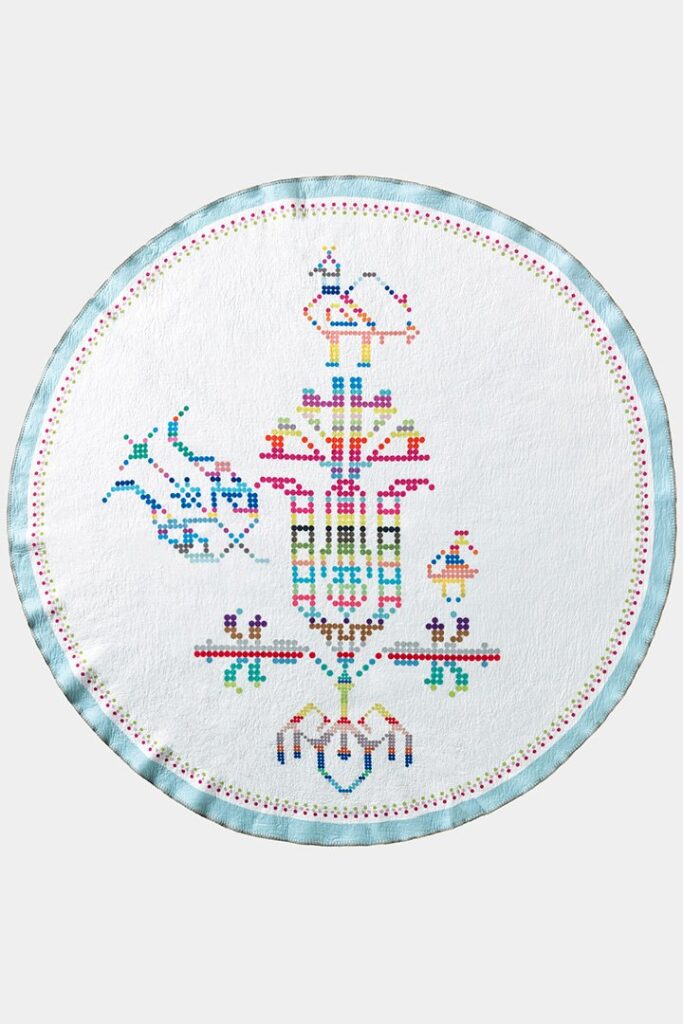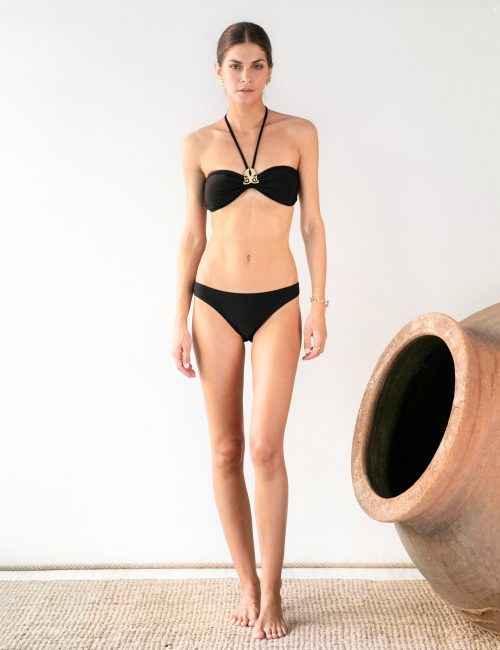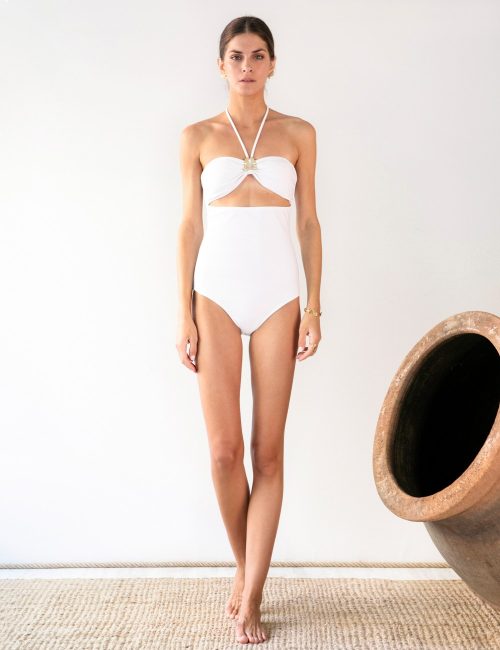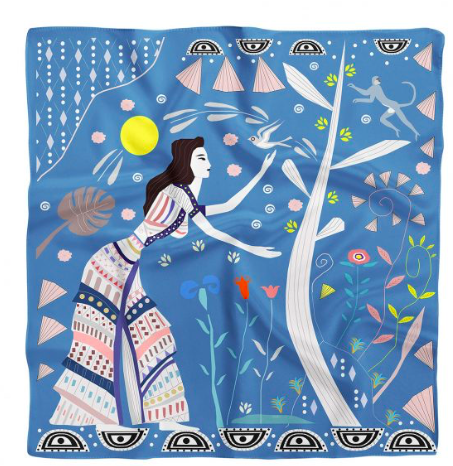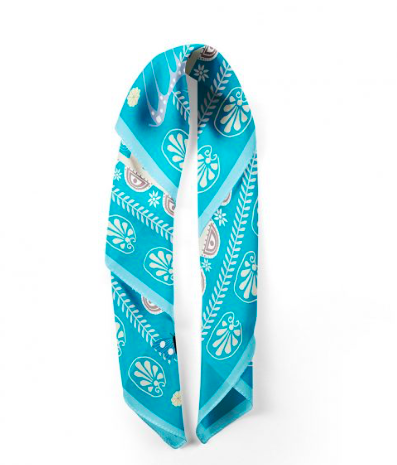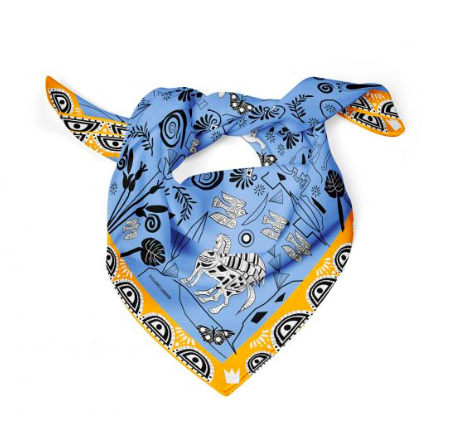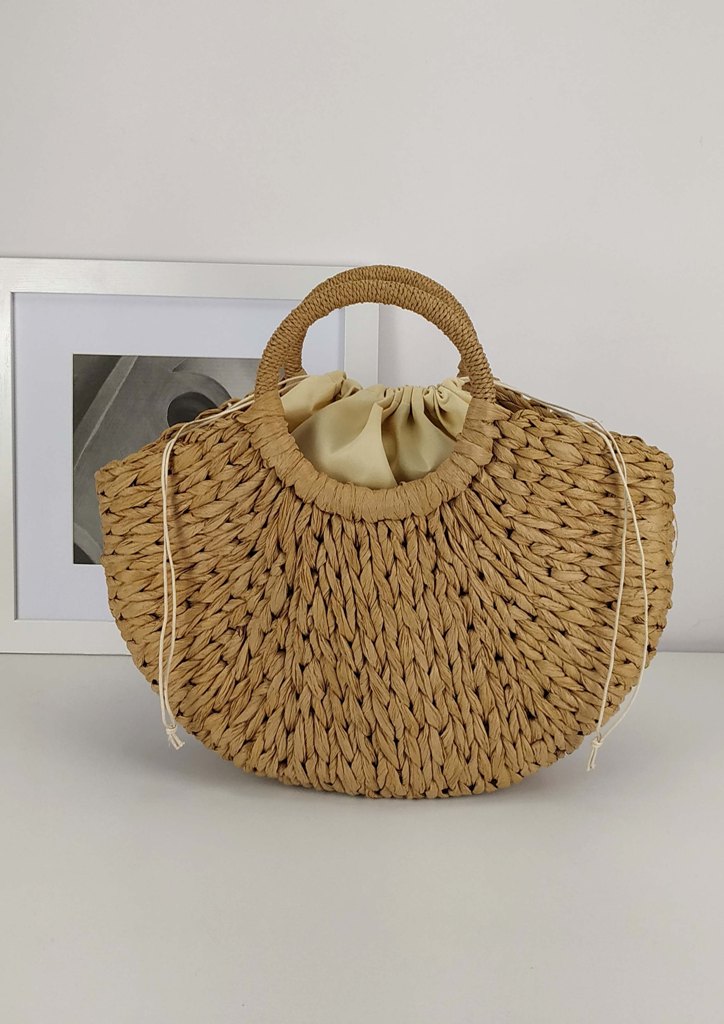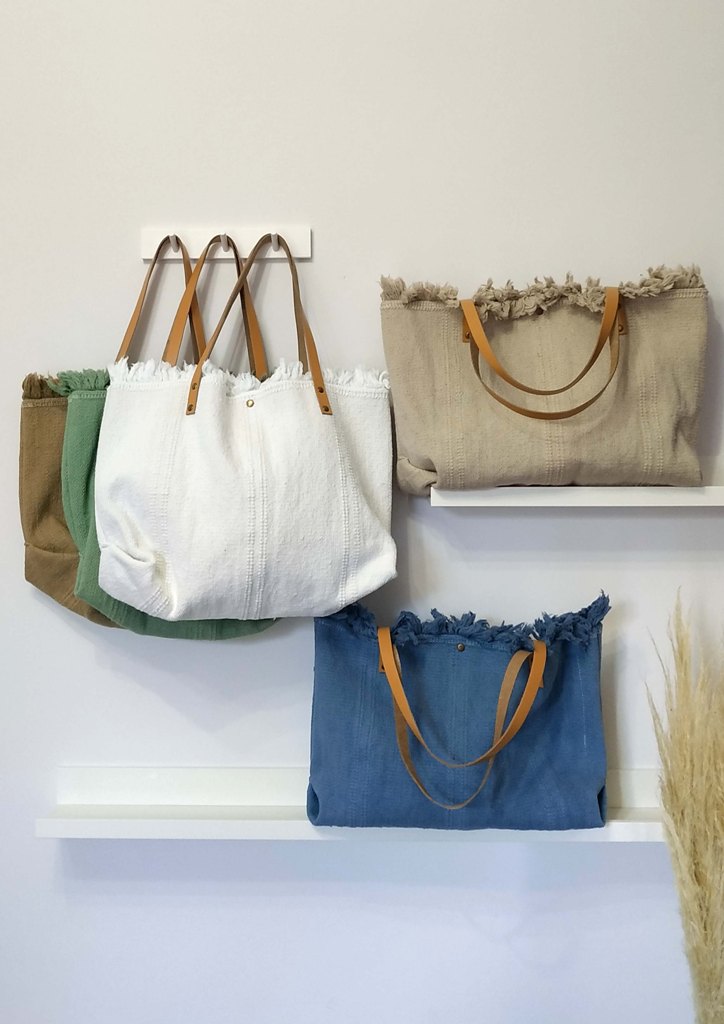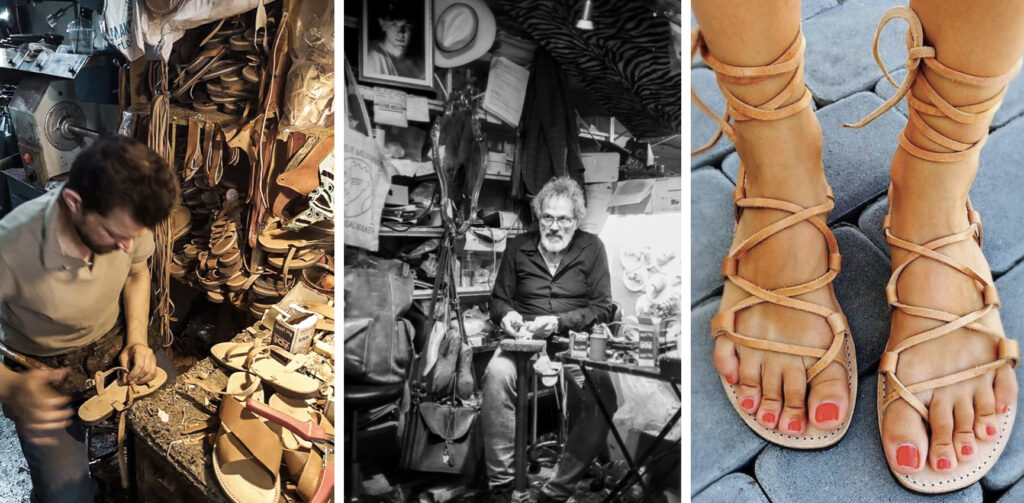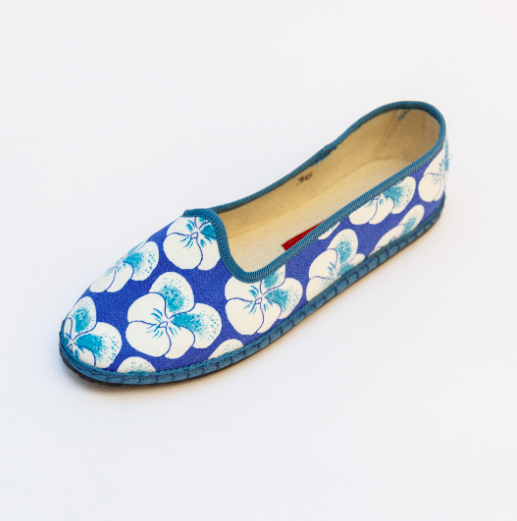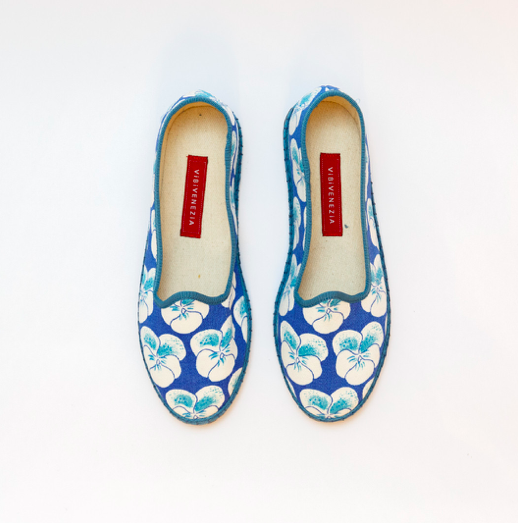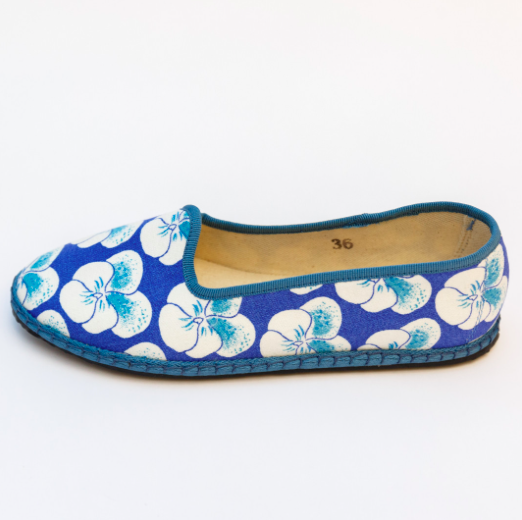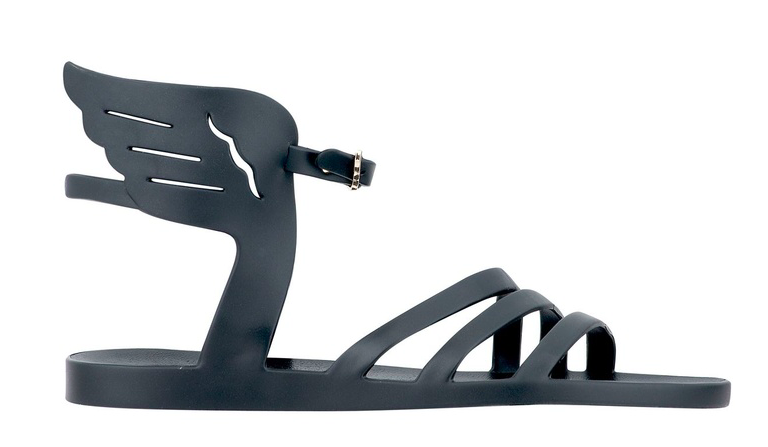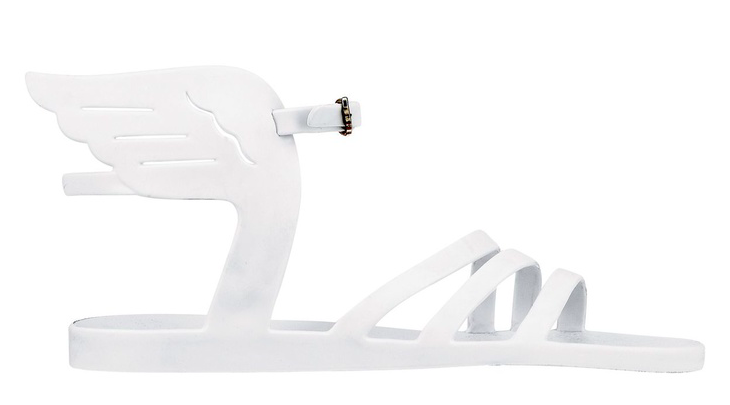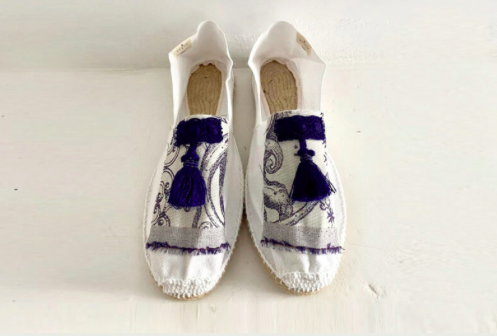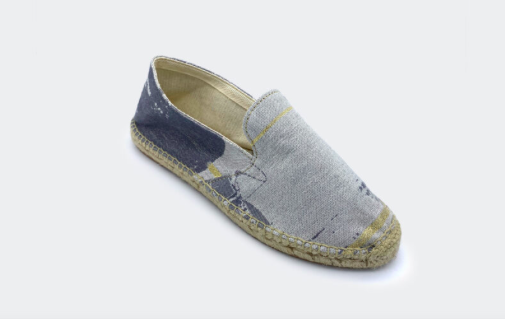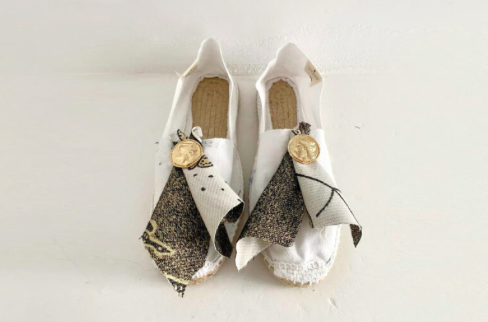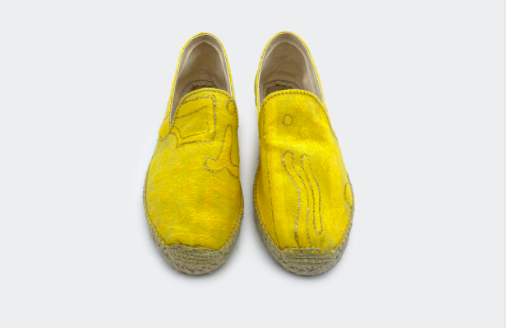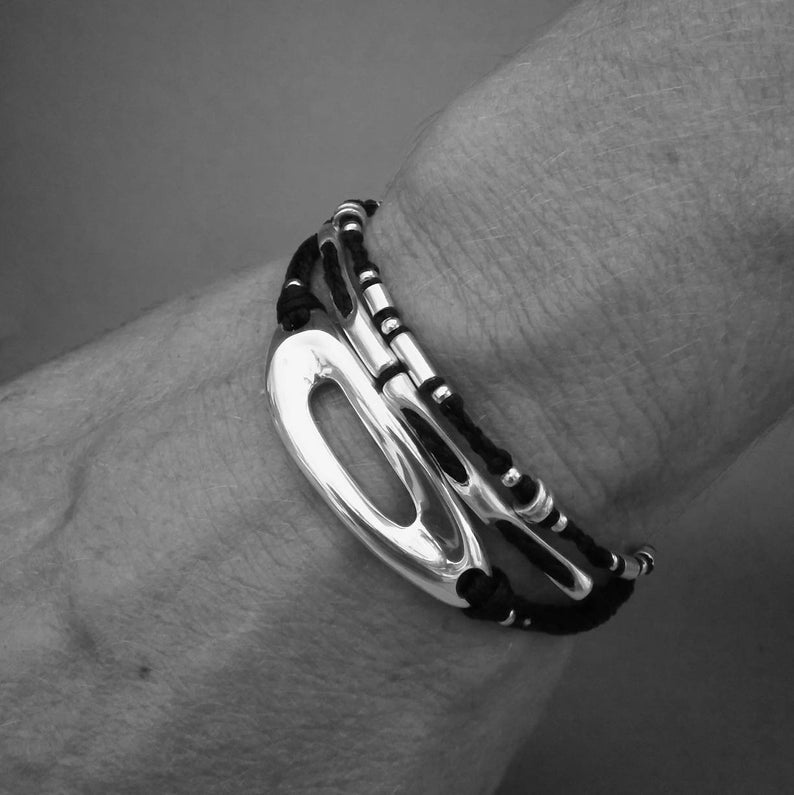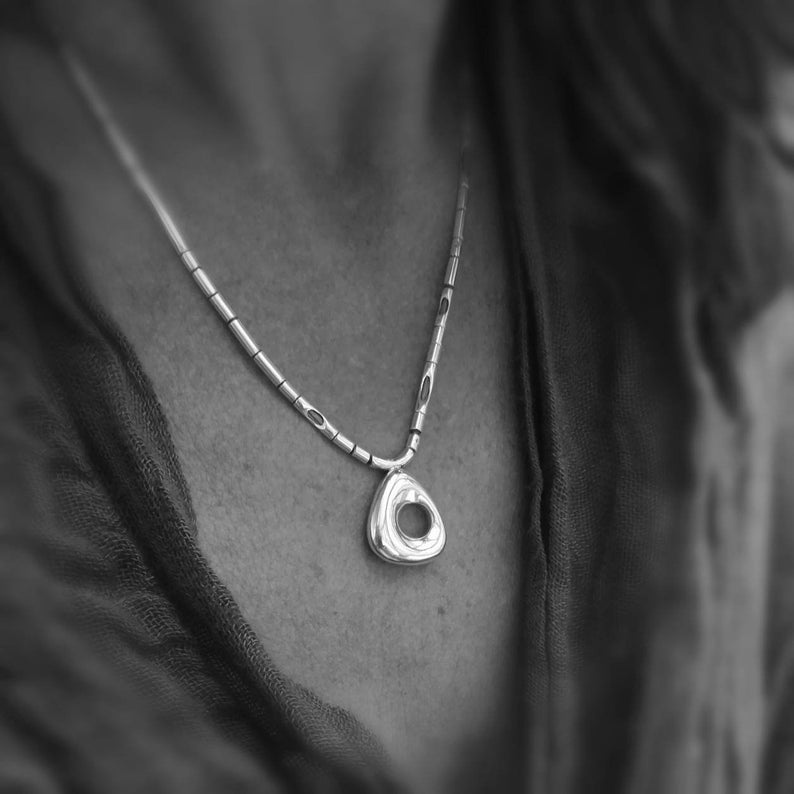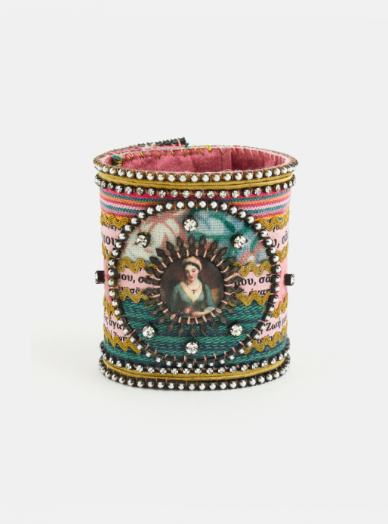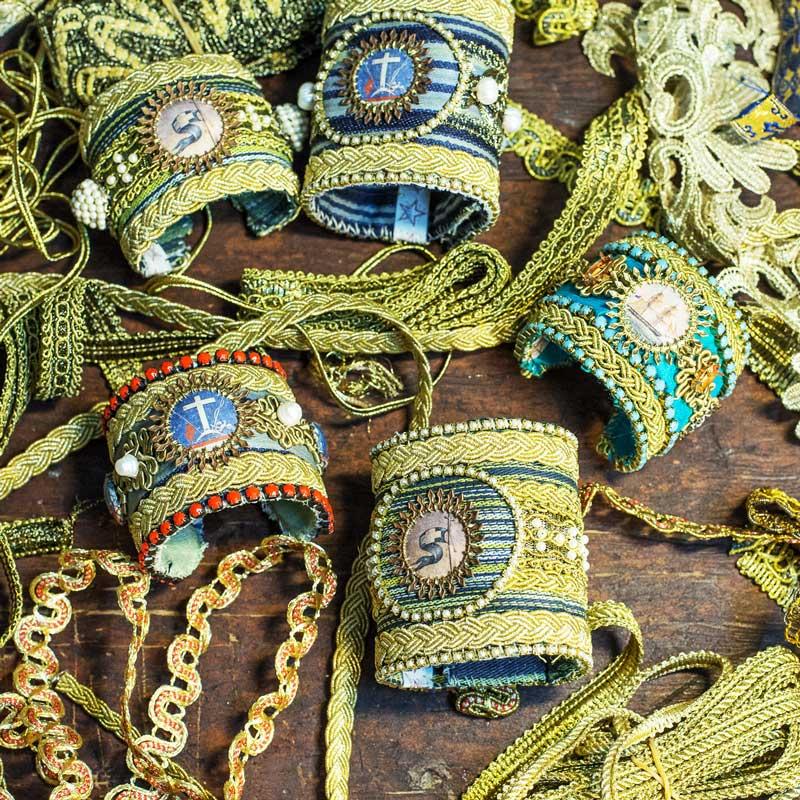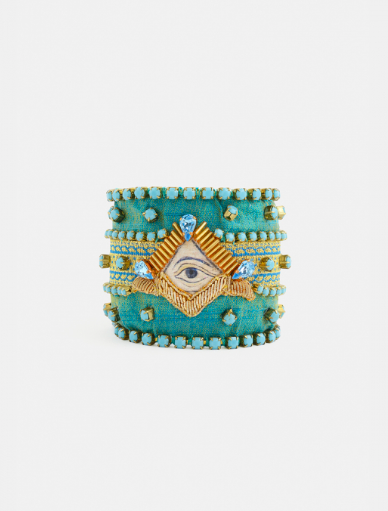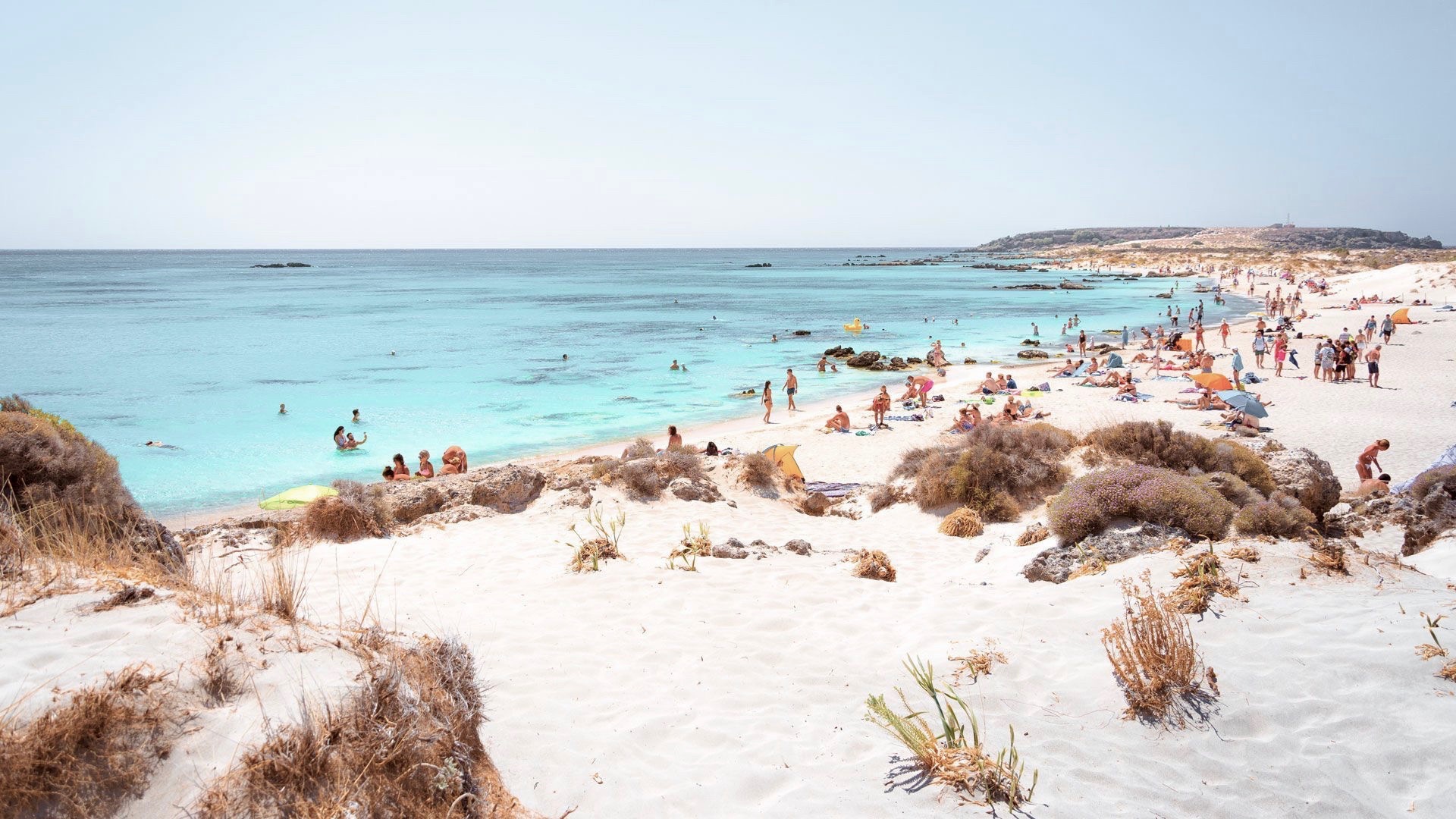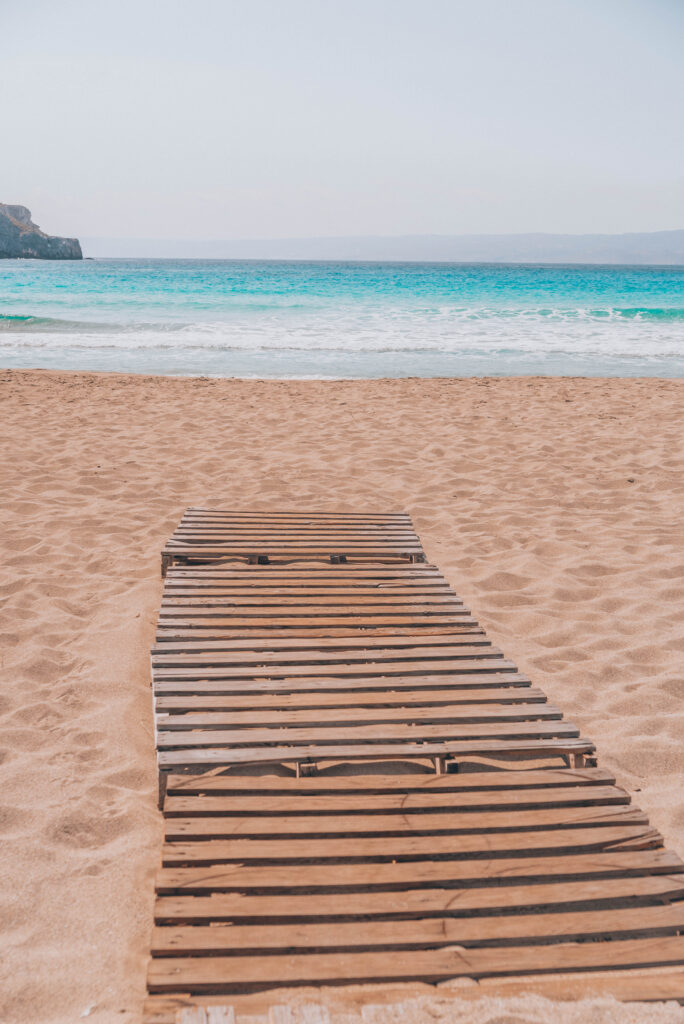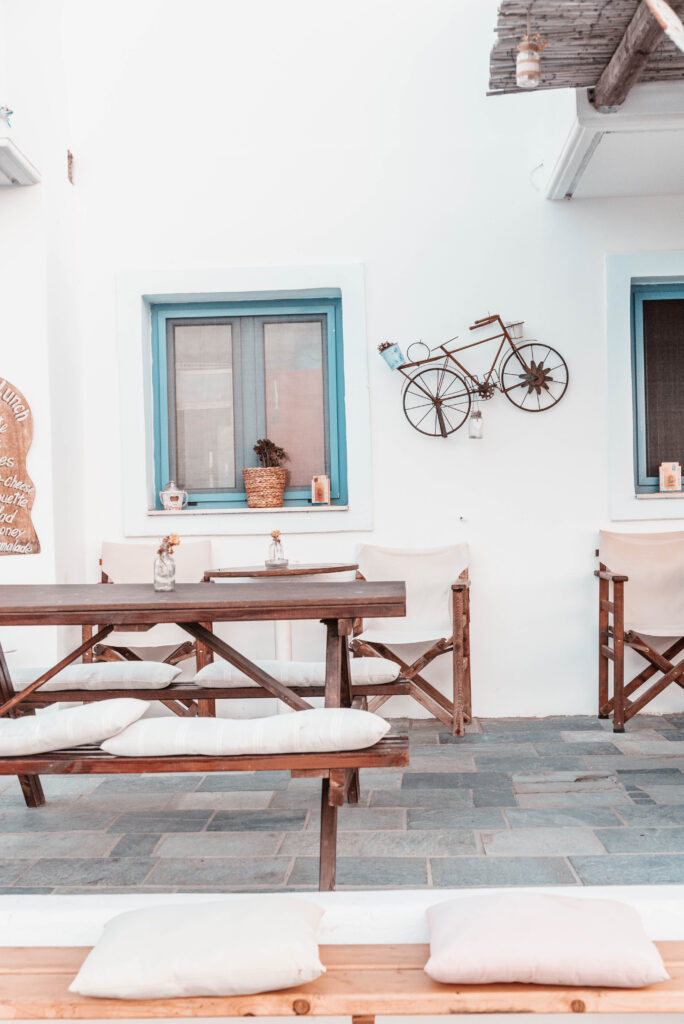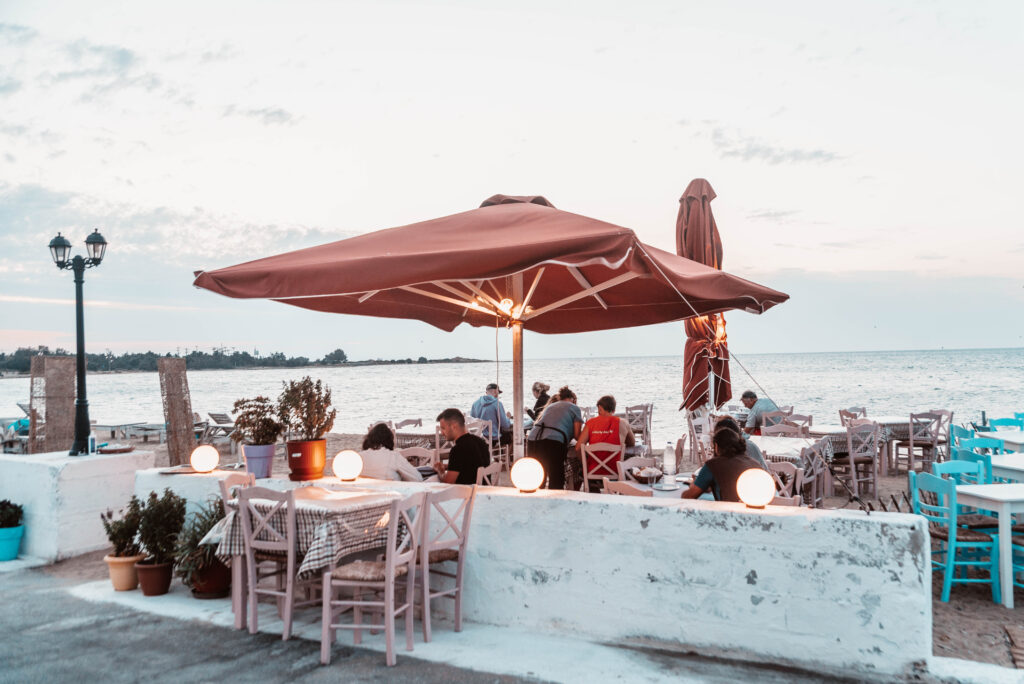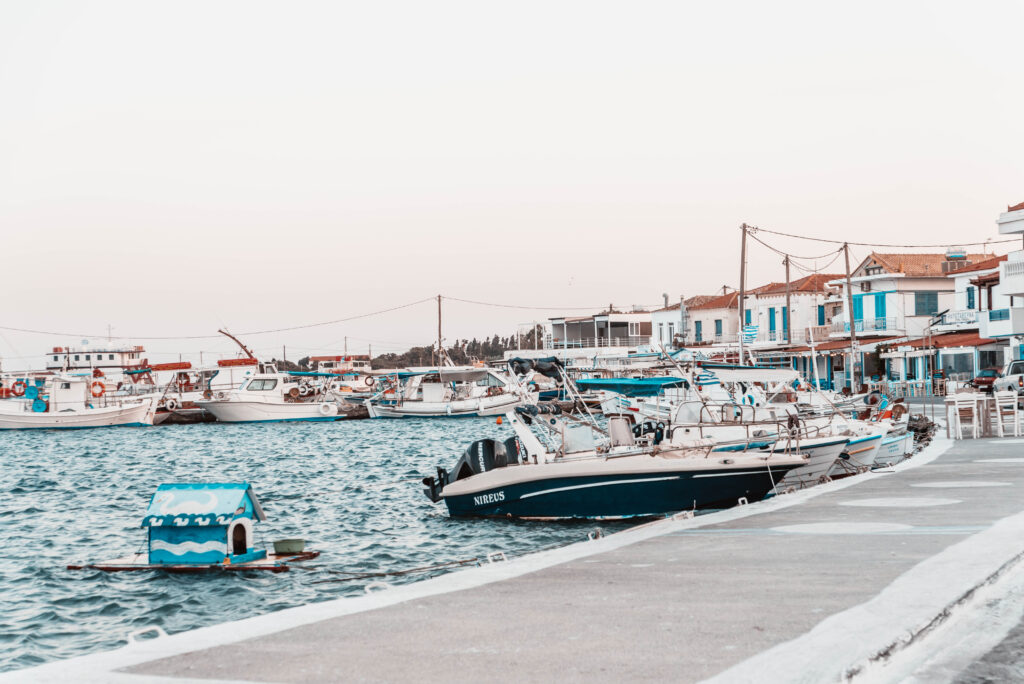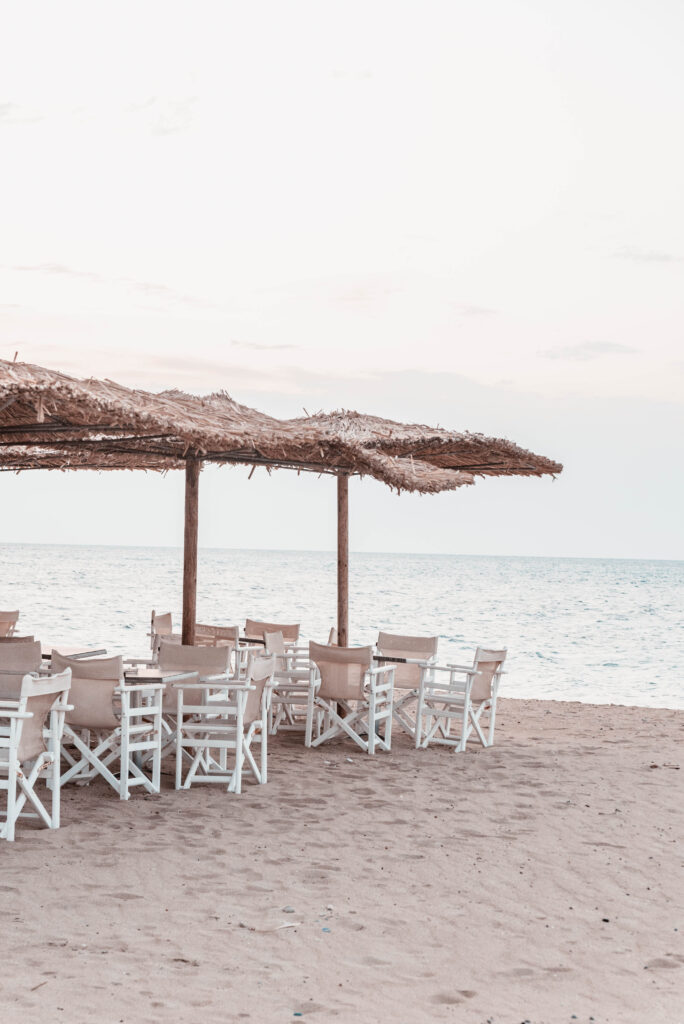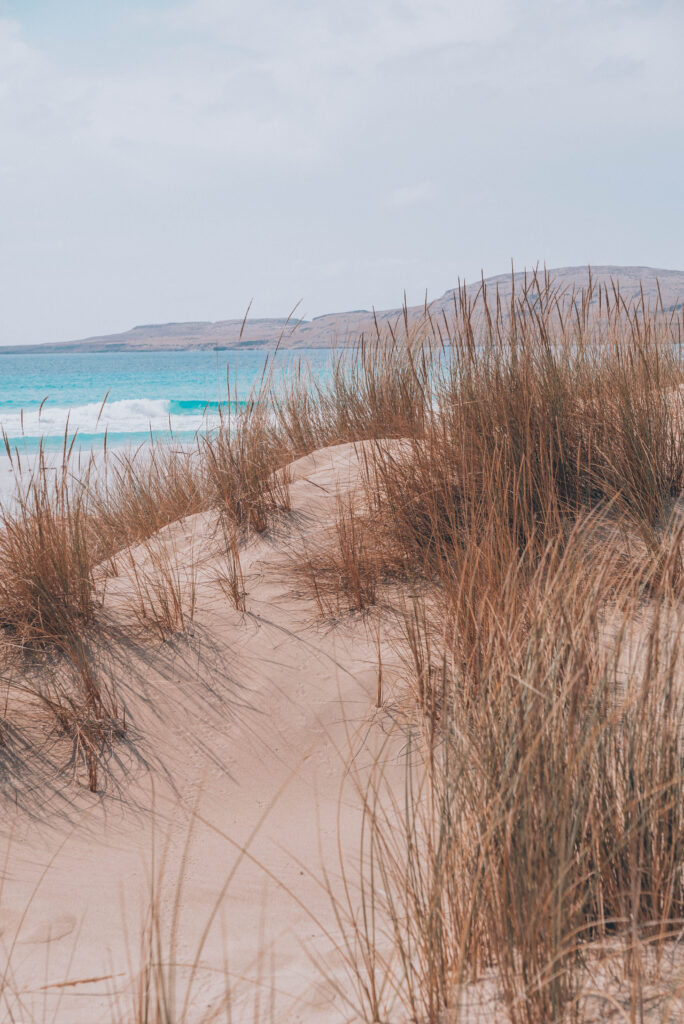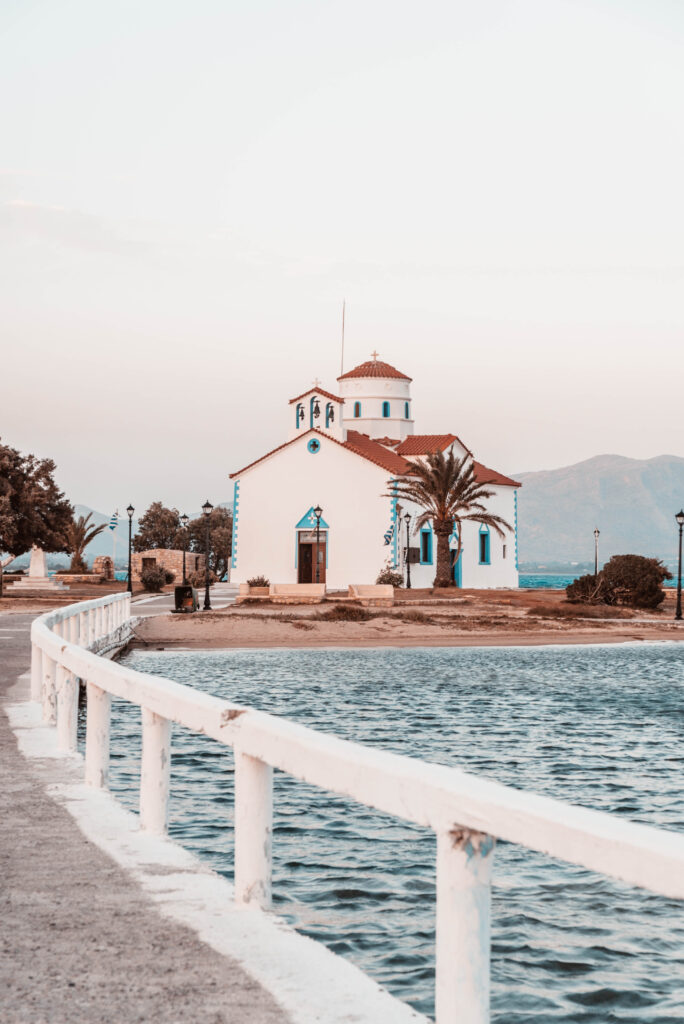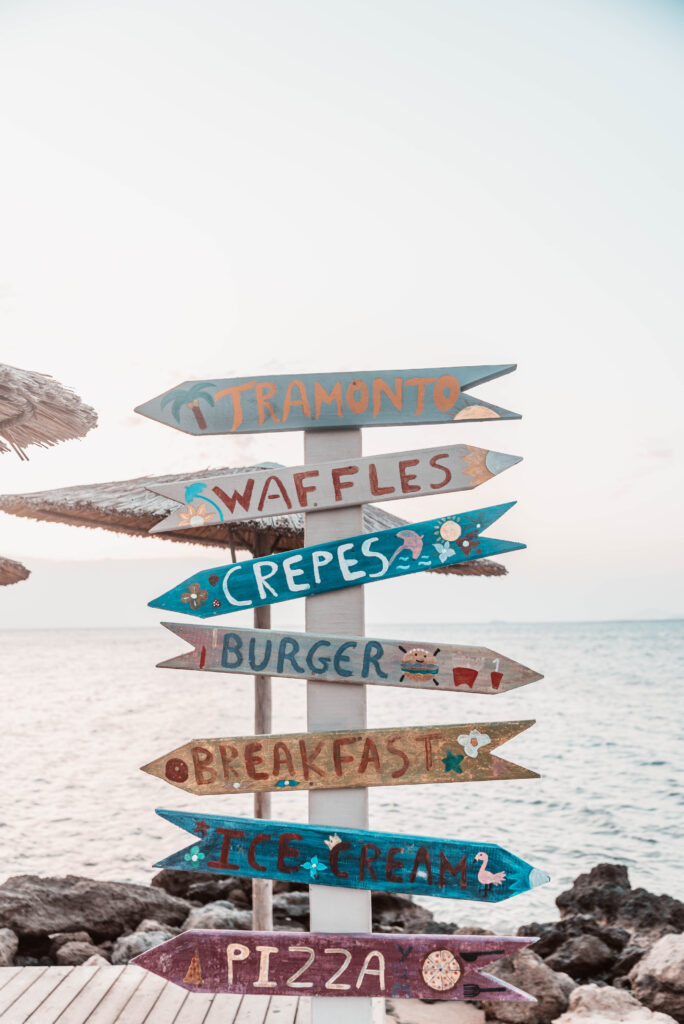Explore our complete travel guide to Skiathos, featuring where to head for brunch, lunch, dinner, and swimming on this charming island.
Skiathos, known for its lush landscapes, gorgeous beaches, and vibrant night scene, is an idyllic destination for every type of traveller.
See + Do
Visit the Papadiamantis House Museum– Immerse yourself in the life and works of Alexandros Papadiamantis, one of Greece’s best-known authors, whose former home in the heart of Skiathos is now a museum.
Explore the Bourtzi Fortress– This small peninsula in Skiathos Town offers breathtaking views, a charming café, and historical significance.
Discover well-hidden beaches– Skiathos is famous worldwide for its stunning beaches, each offering unique beauty and atmosphere.
Stroll Through Skiathos Town– Wander through narrow streets lined with whitewashed houses, quaint shops, and cozy cafés, soaking in the island’s charm.
Discover Skiathos Cuisine- Try local fresh seafood, meze, and traditional Greek dishes on the island’s many tavernas.
Monastery of Evangelistris- This historic monastery provides insights into Skiathos’ religious heritage and offers stunning views of the island.
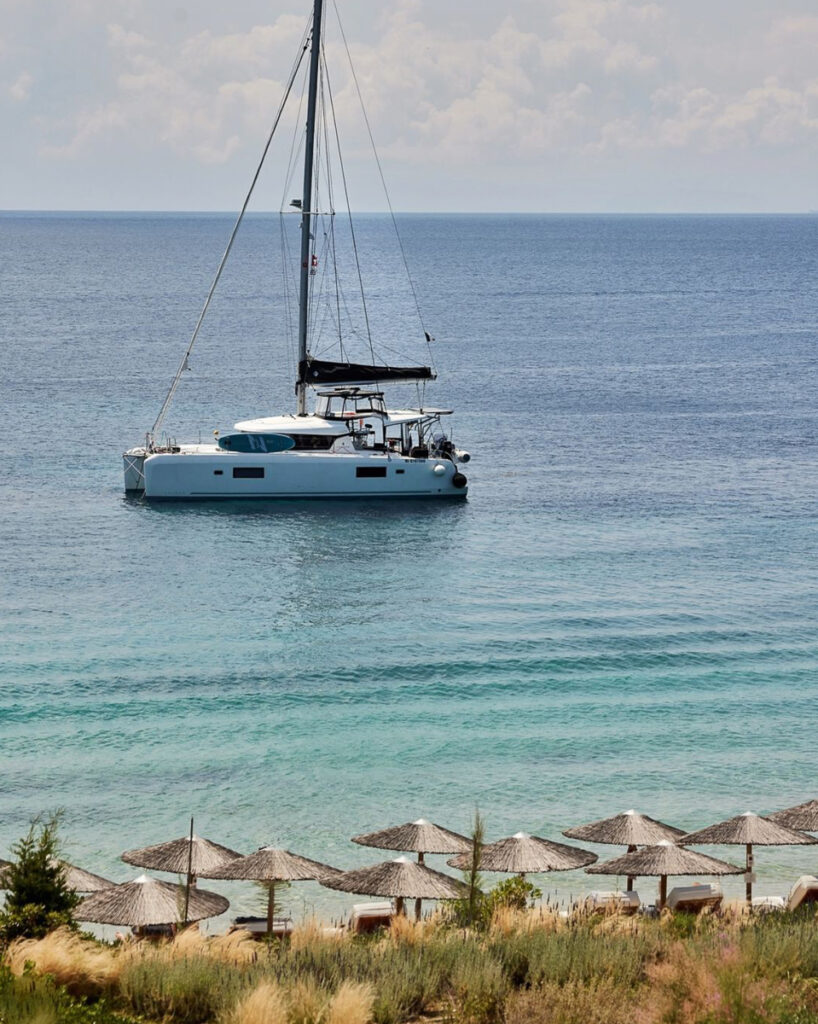
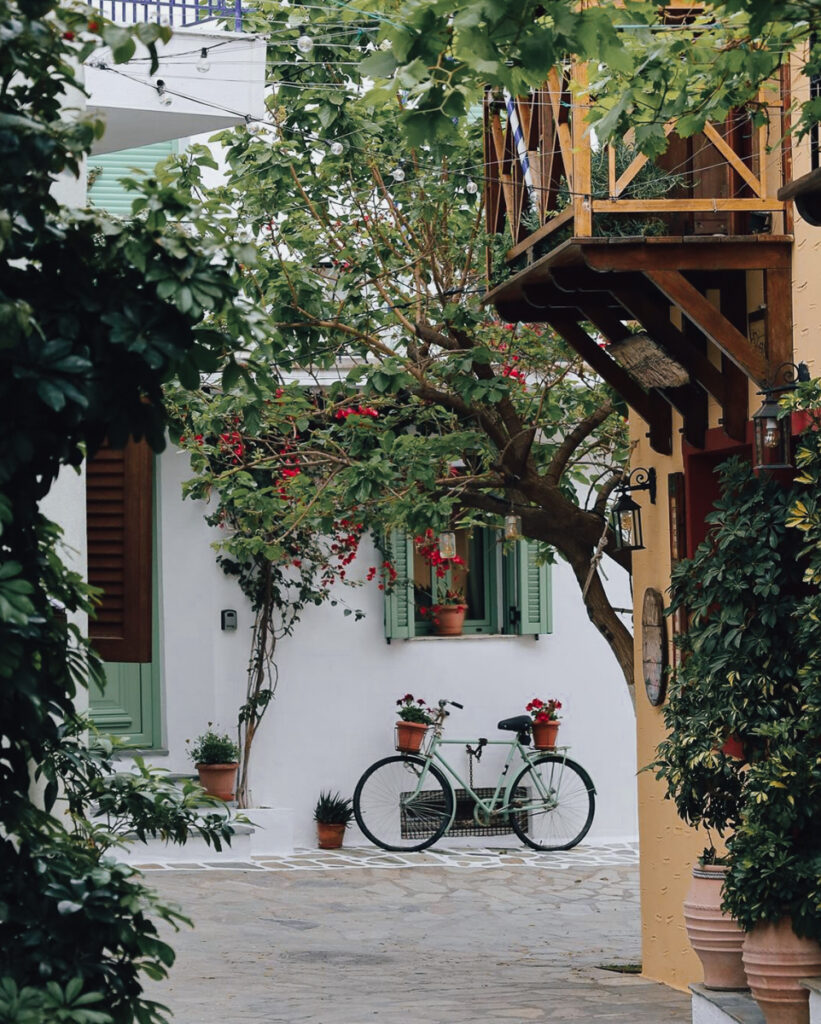
Eat & Drink
Coffee + Brunch
Naval Cafe- This small café stands out for its great brunch menu featuring shakshuka, avocado toast, and cream-filled croissants served with specialty coffee.
Ιl Posto- Enjoy a cozy and elegant atmosphere where you can savour fresh bagels, fluffy pancakes, and freshly squeezed juices.
Pecan- Τhis ultimate all-day bar is located by the port and it’s a perfect spot for a casual morning bite.
Lunch
Taverna Akrogiali– Enjoy fresh seafood right next to the sea.
Bourtzi Skiathos- Perfect place for a long, lazy lunch that includes seafood giouvetsi and veal ragu.
Bakaliko Restaurant- Located in Skiathos Town, this taverna offers authentic Greek dishes in a charming setting.
Under the Pine Tree- Situated in Koukounaries, this hidden restaurant serves traditional Greek cuisine under shaded trees.
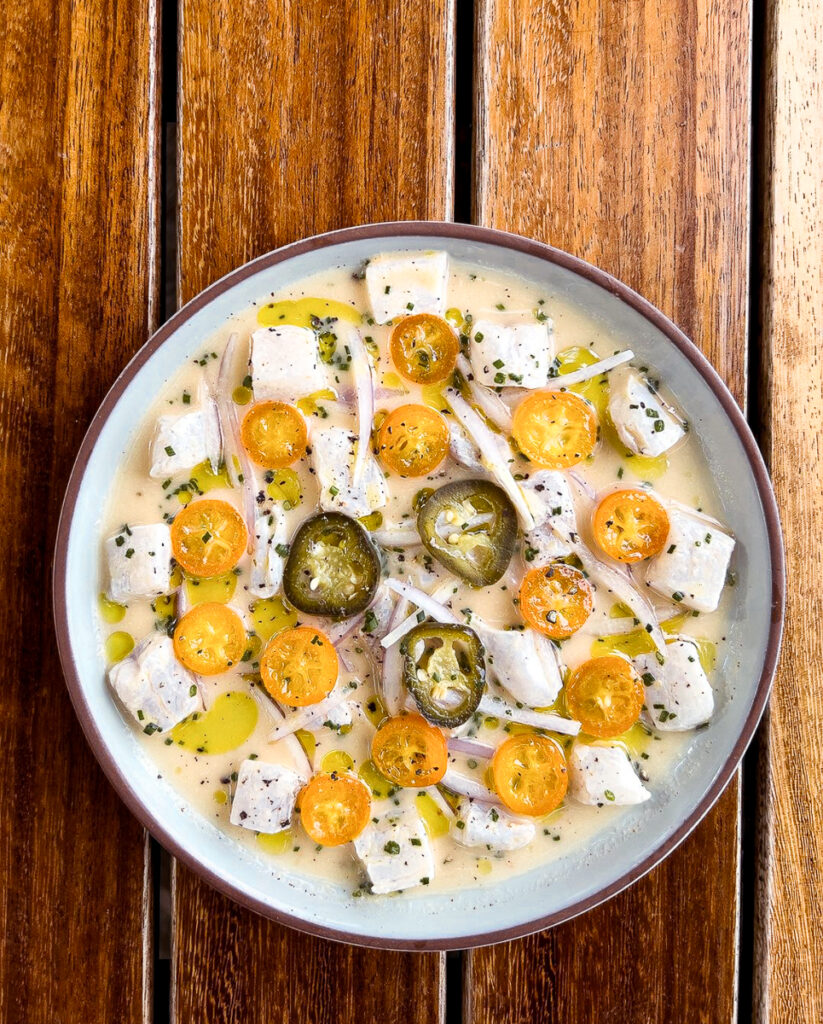
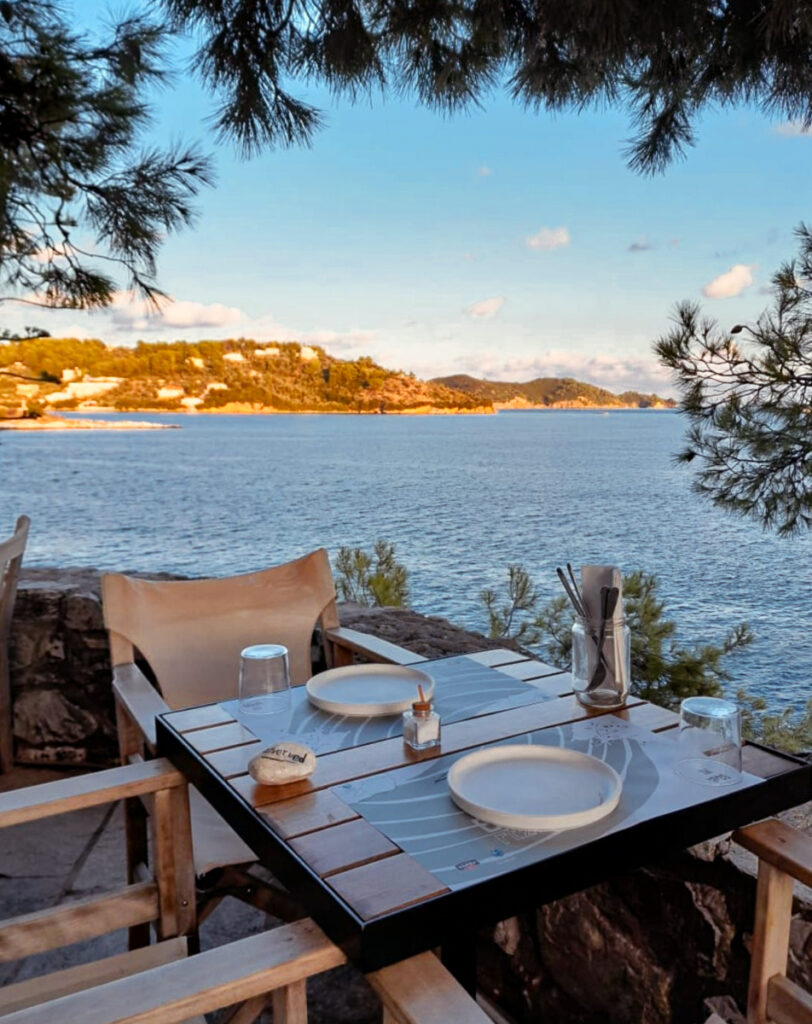
Dinner
La Cusina di Maria- This Italian restaurant located in a picturesque alley offers a unique dining experience with a focus on fresh, local ingredients and a curated wine list.
Marmita- Serves traditional dishes with a modern twist.
Panorama Restaurant & Pizza- Offers a delightful culinary experience, blending traditional flavors with contemporary techniques.
Sweets
Alaska- For the best ice cream on the island, as well as freshly baked waffles.
Gelateria- Serves a variety of handmade gelato and pastries.
Dafni’s Sweets- Τhis cosy café is an excellent choice to enjoy traditional sweets like loukoumades during your evening walk.
Drinks
Barbouni Bar- The ideal destination for tasty cocktails and a vibrant atmosphere.
Anderssons Bar- A great spot to enjoy some evening cocktails.
Kirki- For signature cocktails and great music.
Rock ‘n’ Roll Bar- One of the island’s most famous bars on the old port, you’ll enjoy the vibrant music and perfect panoramic views here.
Ginfish- One of the newer bars at Skiathos Port, here you’ll find the cool crowd sipping on their gin.
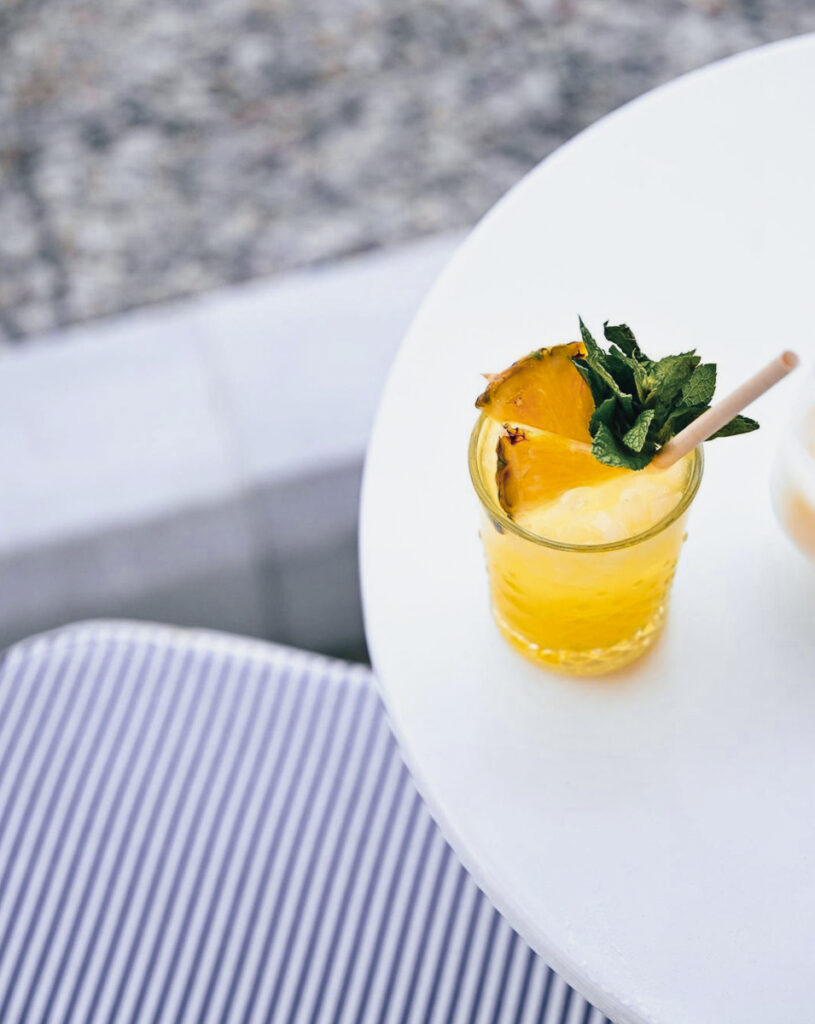
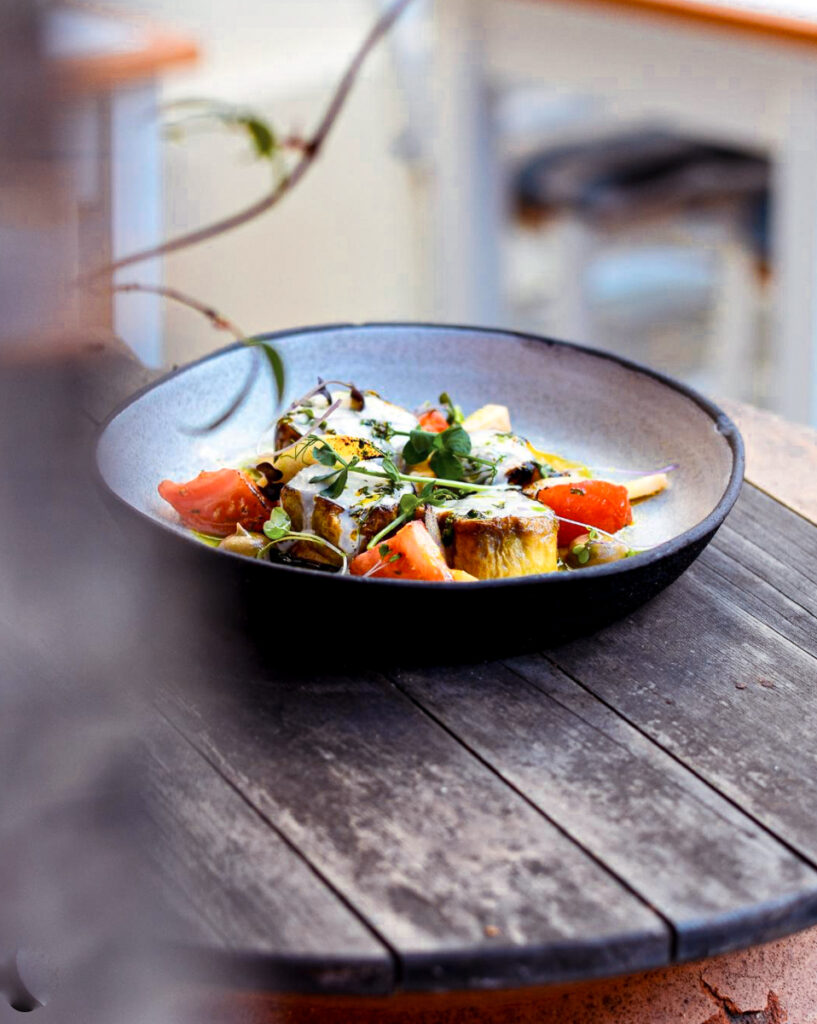
Local Flavours
Make sure to try local flavours and traditional dishes such as the walnut liqueur, quince paste, organic honey, and Malagouzia wine.
Discover
Best Beaches
Koukounaries Beach- One of the islands’ most famous beaches, perfect for sunbathing, swimming, and enjoying beachside tavernas.
Lalaria Beach- Known for its stunning white pebbles and crystal-clear waters, it’s accessible by boat.
Banana Beach- A chic and vibrant beach with sunbeds, umbrellas, and excellent beachside service.
Mandraki Beach- A hidden gem with serene waters and beautiful scenery, ideal for relaxation.
Vromolimnos Beach: Peaceful beach that also offers water sports.
Agia Eleni Beach- A secluded bay surrounded by cliffs, it’s a peaceful spot that boasts turquoise waters.
Ultimate Daytrip
Kastro- Explore the historic ruins of Kastro, the old, fortified capital of Skiathos, on a cliff offering breathtaking sea views.
Tsougria Island- Make a short boat trip to this uninhabited island and dive into stunning beaches, crystal-clear waters, and a serene escape from the bustling main island.
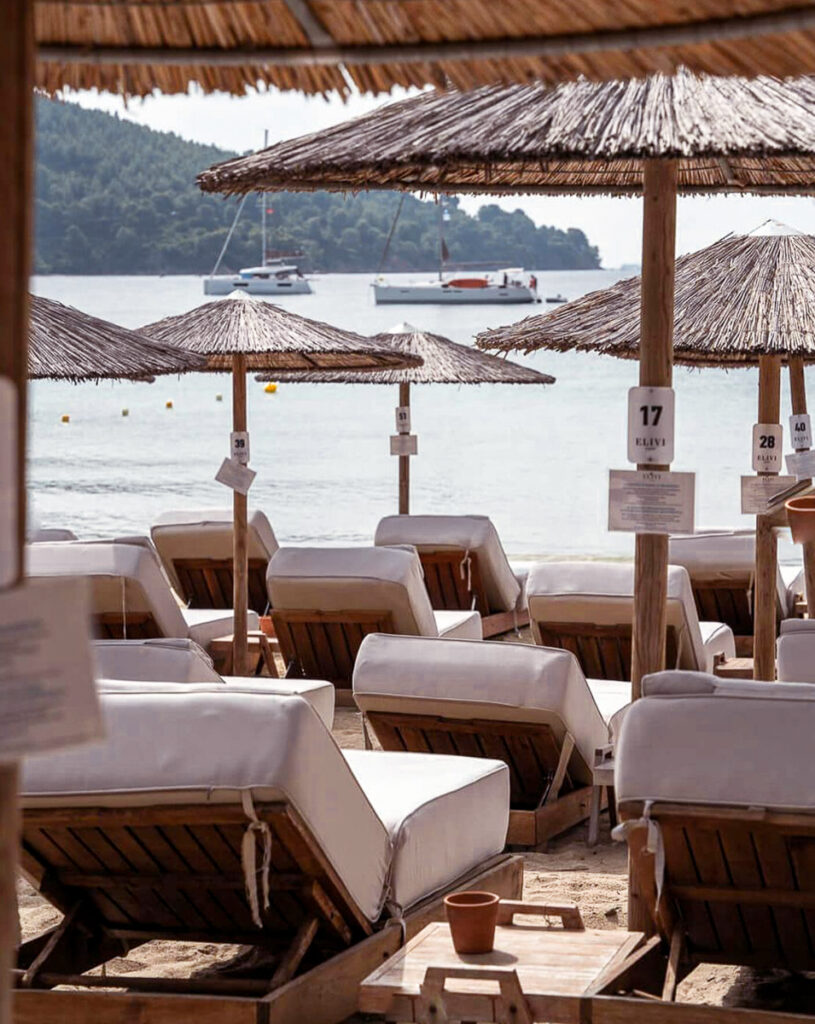
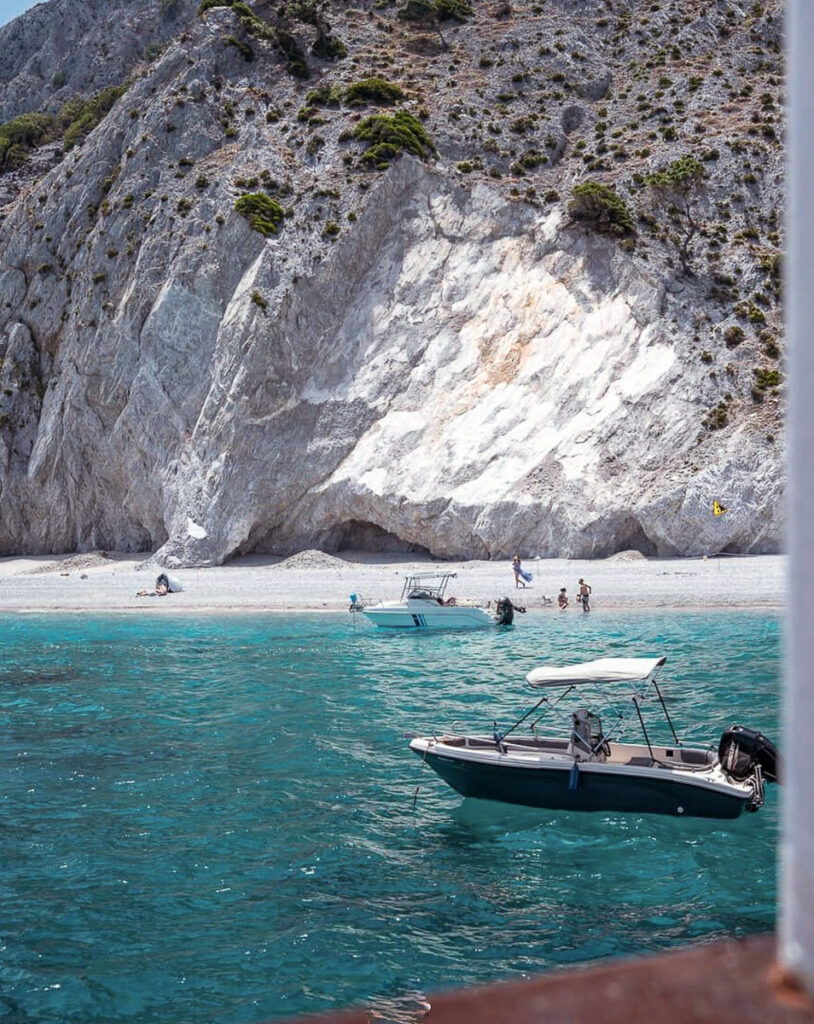
Make Sure You Take Home…
Olive Oil- A staple of Greek cuisine.
Locally Produced Honey- Often infused with thyme or pine.
Handcrafted Pottery and Ceramics- Reflecting the rich artistic heritage of Skiathos
Where to Stay
We recommend staying in Skiathos Town to enjoy the picturesque streets, bustling markets, and vibrant nightlife. This central location allows easy access to the island’s top attractions and beaches.
Where to Sleep
Elivi Skiathis- Surrounded by a pine-tree forest overlooking Koukounaries Beach, this 5-star hotel features contemporary artwork, neutral hues and a showpiece sea-view lobby.
Kassandra Bay Resort- This luxurious seaside resort boasts beautiful views, exquisite dining, and top-notch amenities.
Aegean Suites Hotel- This adults-only hotel offers a tranquil escape with spacious suites, a beautiful pool area, and personalized services.
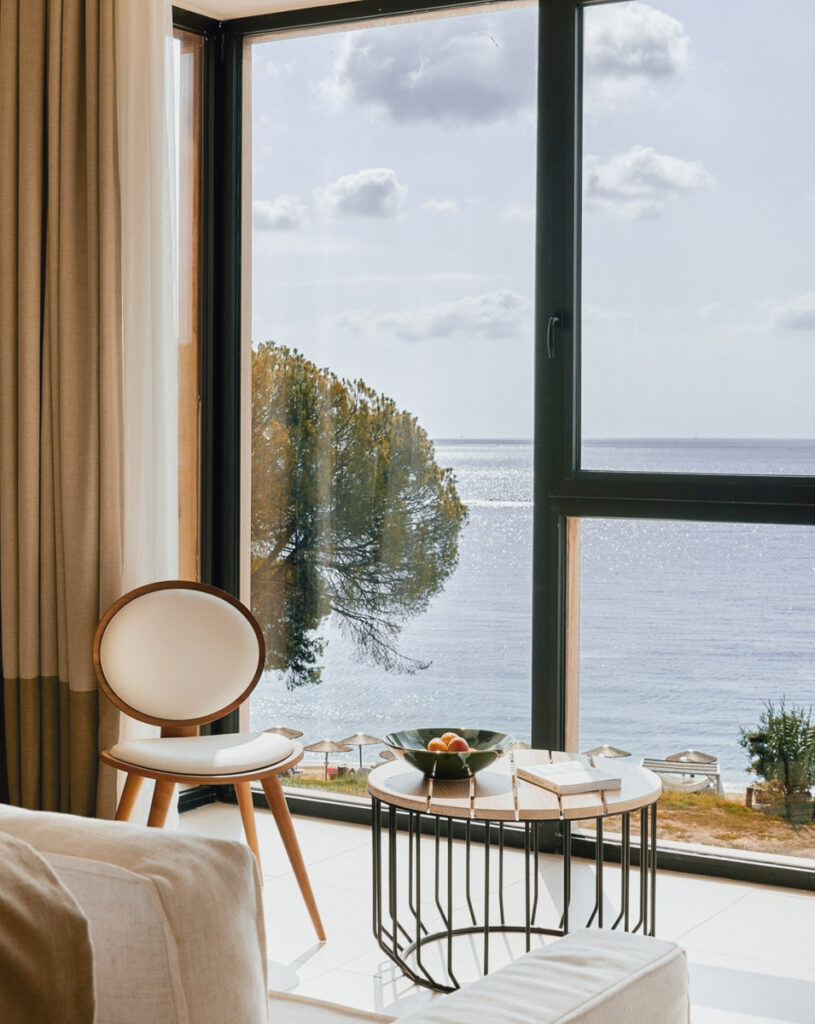
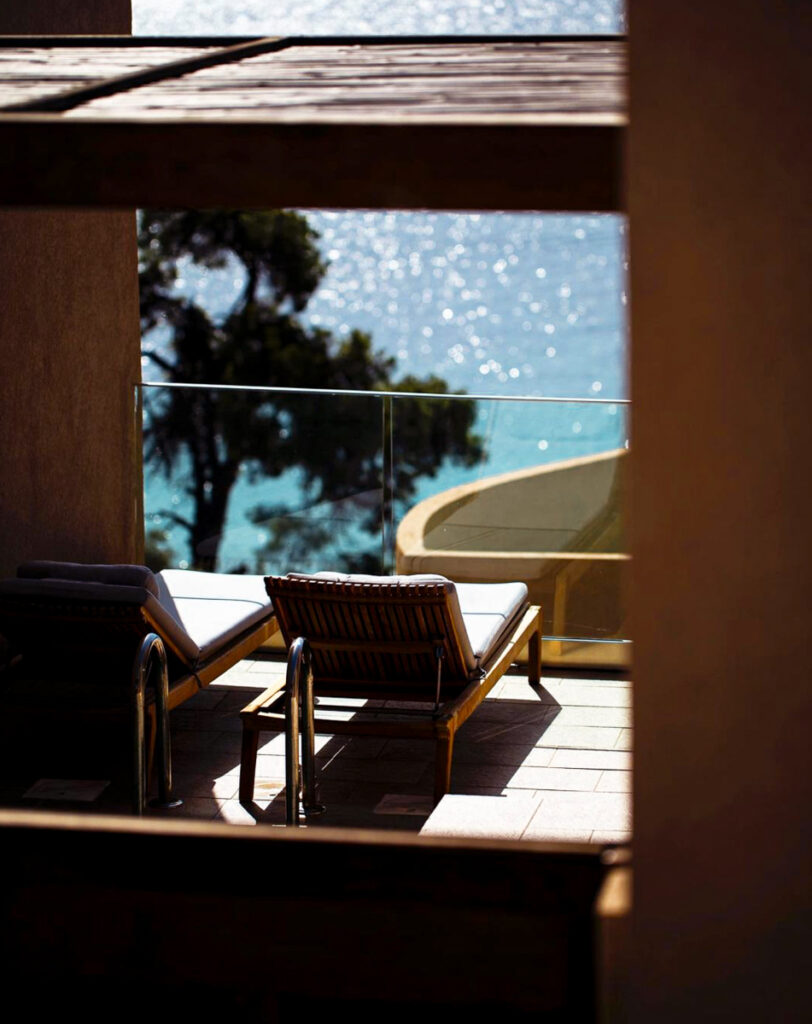
Essentials
Best Time to Go: Early June to late September, when the weather is great and it’s not overly crowded.
Ideal Time to Stay: 3-4 days is the ideal time to experience Skiathos.
Getting Around: On foot for the town area and renting a car or scooter for exploring the rest of the island.
Getting There
By Plane: Skiathos Island National Airport (JSI) offers both domestic and international flights. Check with airlines for direct flights or connecting flights via Athens or other major European hubs.
By Ferry: Ferries connect the mainland of Greece with Skiathos. You can take a ferry from the ports of Volos, Agios Konstantinos, or Thessaloniki. The ferry ride takes around 2-3 hours.
Main Image by Elivi Skiathos



